|
Go Mr. Drysdale! He is definitely living up to his show name, "Pickwick's Mr. High Falutin" and rocking the show ring! At his very first official dog show, in the 6-9 puppy class, Drysdale scored BOTH of his majors plus 8 points toward his championship. Now that's a way to start off a show career. Now, we can just relax and have some fun! (Perhaps learn to hold a stack on the table a bit better ;) and not give the furry eyeball look when the judge examines him HA). He is young and this is that age when they can go through a fear phase (just in time to start a show career, eh?) so I have no doubt he will learn to be more comfortable at these shows. In his defense, the Greenville Convention Center was SO loud and the amplification of the singer for the National Anthem JUST before he was to enter the ring almost blasted my ear drums. Dogs are even more sensitive with their hearing so I can't imagine what he was going through! (And, yes, she did go up for that high note lolz. Beautiful voice, just amplified too much). Here are some shots of Mr. Drysdale having some fun, from his first puppy match at 3 months of age in Tallahassee Florida, to his march in a Mardis Gras parade, to his BPUPs (along with his brother Jethro) in Columbiana and other locations, to his first official show in Greenville July, 2023 at the Carolina Foothills Cluster . . . .
0 Comments
Tory, (Pickwick's Worship the Ground I Walk On) from the Coffee House litter has been the best little show girl. Truly, she has the best temperament of any pug we've ever owned, yet alone bred. What a bombproof, fun, sweet pug. We can't wait to get started on some new fun things like Rally and her Pugiano act now that we got that conformation championship out of the way. It was also tough finding majors (on the weekends we were able to get away to a dog show etc.) but, along the way, we managed to find 2 shows with majors -- Hattiesburg, MS and Greenville, SC -- and she managed to score some nice wins along the way, like Best of Breed, Winners Bitch, Best of Winners, Best Bred by Exhibitor, Best of Breed Owner Handled, Best Puppy, Toy Group 1, and more Best of Breeds in the BPUP. I know her mama Marie Claire is smiling down from heaven and so proud and I know Marie's legacy with tricks, Pugiano act, and just being an incredible pug will live on through Tory. Her littermates are also excelling ... Petunia in Mexico just received yet another title, this time CGC Urban! Here are some photos of Tory's adventure working toward her AKC championship, starting back with her big wins in BPUP all the way through her huge 5 point major in Greenville, SC out of an incredible (and huge) lineup of pugs in her Bred By Class...
It was Pickwick Pugs turn to shine at the Carolina Foothills Dog Show cluster in Greenville, South Carolina. Pickwick's Worship the Ground I Walk On (Tory), Pickwick's Captain of Nampara (Winston), and Pickwick's Mr. High Falutin' (Mr. Drysdale) won all sorts of ribbons and had a blast. Tory finished her championship and Mr Drysdale picked up 2 major wins (one was a 5 point!) so he now has 8 points towards his championship, both majors, all from 6-9 puppy class at his FIRST SHOW! Winston won Reserve Winners Dog and actually beat out Mr. Drysdale too. Winston and Mr Drysdale really seemed to have fun playing and hanging out together. Here they are playing at the dog park at the hotel. Everyone one some purple ribbons .... Tory got that final major (a 5 point!) to finish her championship. Winston was especially amazing because he has never been a show dog before. He learned so fast and was incredible at the LOUD show with all the sounds, sights, smells, (which can be scary for some dogs). The event was held in the Greenville Convention Center which was very nice but HUGE. Not once did his tail go down! He was a trooper learning how to walk on a show lead (he went to a couple of handling classes prior) and a trooper meeting all the people, fellow pugs, and even judges! Wow. His family lives in a nearby city and they SO graciously agreed to allow Winston to have this last hoorah before he is neutered next week. I can't say enough amazing things about how well Winston behaved -- bombproof - and this was a testimony to his wonderful family and the love and care they have shown him. Here he is winning his first purple and white ribbon ;) and his FIRST day as a weekend wonder show pug! We actually made a visit to the little yellow truck to collect on him in case he proves to grow out as amazing as he already is. We did the DNA health test swabs so all that would be left would be to see how his hips have matured by age 2. Winston's wonderful family let us work with him several weeks before the show to work on loose leash walking and "stacking" (standing still for examination) and such. Here he is when he came to visit the piano studio to train ;) and also when we got to see him the first time after he had grown up! We met at a coffee shop and we were just blown away at how amazing he looked -- his wonderful family had kept his nails so short, coat was divine, and the quality care and food was so obvious (he gets goat's milk every day!) We even met at Home Depot so he could train there with all the distractions . . . But it was so wonderful once we were safely home. Winston got a bath before his mommy and sister came to get him and I had a huge sigh of relief ... not because I wanted him to go, but because I was so so worried the whole time taking care of such precious cargo. I hope Winston will dream about his adventures for a long time but I know I'll cherish this trip and getting to be able to see how beautifully one of the pups from the Poldark Litter grew out. And how VERY loved he is. Can I tell you how excited he was when he saw his mom and sister?? Seriously, he just came alive when he saw them!! Here are some more shots of him on his adventure trip as a show pug and our celebration trip to Waterfall Park and for a whipped cream cup ;)
On the Good Dog website there is a wonderful definition of a Preservation Breeder.
"Preservation breeders provide certainty when it comes to the physical and behavioral traits of their purebred dogs and predictability regarding hereditary issues and health conditions. Without preservation breeders’ dedication and hard work, we wouldn’t have the breeds we know and love today. " As I mentioned in the last blog post, I would edit this slightly to read "Preservation breeders provide MORE certainty" or "more predictability". For when it comes to personality and temperament, no 2 pugs are alike and there are so many factors involved -- genetics, environment, what happens in the first 12 weeks, the puppy's experiences in the first 12 weeks, first year, diet, training, socialization, encounters. With regard to temperament, the formula for a breeder follows is: A + B = ? (most likely C, but could be XYZ). Think about it. If you have siblings, are you all alike? You might share similar traits -- probably learned behaviors -- but I'm willing to bet you are all slightly or perhaps even drastically different with regard to personality. As unique as our thumbprints, (isn't it truly miraculous that every single human has a different thumbprint?), so it is with personality. Even with pugs. Even with a littermates. Even when we have repeated a breeding -- with the same dam and sire -- each litter is unique, and each puppy is unique and very often completely different in temperament. To quote an older, quite experienced pug breeder of over 50 years: "You find a [sweet, confident, balanced and jolly girl], and a [sweet, confident, balanced and jolly boy], and then you just pray." There are so many factors which contribute to the ultimate personality a pug will have once it reaches stable emotional maturity around age 3-4. We work with the puppy during the first 12 weeks of its life and give it a solid start. But all of this work can actually be undone by a bad encounter or experience after 12 weeks, or simply by a lack of follow up over the next few years. Just because a puppy did all of the Puppy Culture protocols during its first 12 weeks of life, these protocols and training and habituation have to continue until the pug reaches stable emotional maturity around 3-4 years of age. As Jane Lindquist, the author of Puppy Culture, explains "It's not like you get a 'pass' just because you did [Puppy Culture]." "Temperament could be best described as a dog’s innate personality. It’s the genetic hand he or she was dealt when he or she was born and (epigenetics aside) will determine what he or she will pass on to his or her children. Behavior is the outward way that a dog acts – what he or she actually does. Behavior is the result of a complex interaction between genetics and environment. Behavior is modifiable. Temperament is not. But Temperament will dictate the outside limits of how much you can modify behavior. Just to make it more complicated, how easily you reach those outside limits are (e.g. how modifiable a dog’s behavior is) is in itself part of temperament. Two thoughts for you to ponder about this distinction: 1. Ethically, I feel called to do everything in my power to modify behavior before puppies leave my house in order to maximize the likelihood of them growing up to be behaviorally sound dogs that enhance the lives of the people they live with. This is what Puppy Culture is about. 2. But this places a burden on me not to confuse behavior with temperament. Ironically, our skill at raising puppies becomes a central challenge for us as dog breeders – how much SHOULD we need to modify behavior and what do we move forward with in our breeding programs? I absolutely believe that “normal” puppies require quite a bit of socialization/behavior modification in order to be good pets and working companions. But we have to be aware that, just because we modified a behavior, does not mean that the underlying temperament trait that produced the behavior is genetically erased." One reason we love to stay in touch with puppy owners is to see how temperament develops and how a puppy will end up around age 3-4. With a little behavior modification, humans can improve upon certain weaknesses in temperament. For example, through lots of socialization and confidence-building protocols, we were able to turn some of our more soft (shy) pups into show superstars. In truth, they never completely loved the show scene, but they were able to withstand it. Were they glad to retire? Yes. Do they thrive in our lap more than on the stage? Yes. Meanwhile, the confident, outgoing, natural show dogs who finished their championship quickly, "owning the ring" at 4 months of age, are quite bored now sitting on a lap. They need an audience. Genetically speaking, these pugs were either soft/shy, or confident/outgoing. (These were littermates, incidentally .... Lilly, and Miss Dior). We have had to work on behavior modification with both of them. With Lilly, to build confidence and the ability to handle loud noises and huge crowds; with Miss Dior, to stop barking at everyone (she demands to be noticed) and learn to settle. At 7.5 weeks, indeed, Lilly was dubbed "thoughtul" and Miss Dior was dubbed the show girl. We know, even with all our training and some success in working toward the middle of "the spectrum" that, by nature, they are soft and loud. So when we looked for mates when it was time to breed them we looked for more confident, jolly (let's say "clueless" ;) males for Lilly and super sweet and laidback males for Miss Dior. We were lucky. Ideally, with regard to temperament, when choosing a pug for future breeding, it's good to look for that middle-of-the-road puppy. And that's what we have do now. We have ruled out some amazing pugs conformationally speaking because they were just too aloof or independent. This "moderate in all ways" applies to conformation as well. It's funny, but I always remember my grandfather who would say "everything in moderation my dear." Jane Lindquist shed some insight in her experiences as a breeder. She had always had confident and bold pups. "We did an outcross in our last litter to move our temperaments in a softer direction. Our family of dogs have always been great pets with people, but I would say they had pretty low pack drive and were maybe 50/50 good with other dogs, with 40% being total angels with dogs of all kinds, 40% being good with dogs they live with but not wanting to deal with strange dogs, and 10% just terrible with other dogs. We also saw some restlessness creeping into in our lines and wanted to tone things down. Since we do performance and like to place dogs with people who do performance, we wanted to improve dog-friendliness and breed dogs who are less high-maintenance. So we outcrossed to a sweet lamb chop of a dog from the UK. Yes, we got great dog-friendliness, excellent pack drive and trainability but, guess what came with that? Yes, softness, sound sensitivity, and relative high level of fearfulness. And they displayed it from an surprisingly young age - they literally alarm barked two days after their ears opened. Totally different from any other Bull Terrier litter I have seen. To the point where we almost could not do the startle recovery protocols because they displayed true fear type reactions from three days after their ears opened - everything had to be GREATLY modified to keep their response where we wanted it, with a tiny startle and immediate recovery.��This early onset of fearfulness is, I think, decent evidence of the genetic component involved, but I also have to say that, as a professional dog trainer, I had had at least three students with dogs from this line over the last few years and had observed a few more dogs from this line, and that fearfulness/softness is definitely there - along side of the sweetness and dog-friendliness. So it wasn’t like I was going into this blind, I was just shocked at how overwhelmingly strong the genetics were for it. This litter’s PAT was unlike any of my other litters - perhaps not out of range for a different breed, but certainly nothing like my previous litters. So I took my own advice and went back home and used the next three weeks to double down on what needed to be done, with the help of our remarkable puppy owners and Gina Boderck. The results? Of the 8 surviving puppies, 7 are totally normal to bold. You would not know in a million years that they had tested “soft” in their PAT. However, despite months of work, one puppy remained fearful and soft to the point where we placed her as a pet, even though she was our pick puppy. But even that puppy is confident in the context of her own home or a familiar place and does not show any sound sensitivity in a familiar environment. What’s more, she does show enrichment seeking behavior in that when something scares her, she tries and tries to overcome and investigate. This is in stark contrast to the other non-PC dogs that I have seen with this kind of sensitivity, so I do chalk that up to Puppy Culture. This puppy is a great pet but just does not enjoy new places with a lot of commotion so never going to be a show/performance dog, and I don’t want that included in my lines. So that was a perfect example of both how genetics can dictate the limits of behavior modification but, even so, how well you really can do with behavior modification even with a very poor genetic prognosis." One of the lines from Puppy Culture is "The proof is in the pudding." To make pudding just right regarding personality, the formula is DNA + Breeder's protocols + Owner's training and protocols + Socialization and Environment + Diet + Quality Air + Aliens flying overhead + Venus Aligning with Mars + Goat's Milk + Comfy Beds Seriously though, yes genetics can dictate the limits of behavior modification but, in our experience, it's amazing what humans can do "with behavior modification even with very poor genetic prognosis." For more amazing tips from Puppy Culture for pug owners we highly (highly) recommend this course "With Open Arms and a Level Head - How to bring a Puppy into your life." "From transporting your puppy home through crate and house training, this course will give you a solid plan for bringing a new puppy into your life!" It is a continuation on what we have worked on with each puppy during its first 12 weeks of life. Yes, it is 8 it is 8 hours and 30 minutes but it will make the years to come with your pug so much more satisfying and rewarding for you and your puppy. It is (along with enrolling in Puppy Kindergarten and subsequent training classes for the first 3 years at minimum, along with regular training and socialization) your best chance at making sure that your puppy becomes the 3 years old pug you were hoping for! (Note - I will be updating this post with developments as they become available.) Preserve: "To keep from harm, damage, danger, evil, etc.; protect; save." (Webster's New World Dictionary) or "To keep in perfect or unaltered condition; maintain unchanged." (American Heritage Dictionary). Using these definitions then, to "preserve" a breed standard would be to keep the breed standard from harm, damage, danger, evil, etc.; protect; save." Or "to keep the breed standard in perfect or UNALTERED condition; MAINTAIN UNCHANGED." The term Preservation Breeder refers to those breeders who are working to preserve the breed standard and breed type. They complete all health tests recommended by the breed club, and very often additional testing (for example Pickwick Pugs adds spine, heart, and many other health screening tests). Preservation breeders are very different from
Preservation Breeder "Preservation breeders provide certainty when it comes to the physical and behavioral traits of their purebred dogs and predictability regarding hereditary issues and health conditions. Without preservation breeders’ dedication and hard work, we wouldn’t have the breeds we know and love today. " (This quote, from Good Dog website is wonderful, however, I will edit it slightly to "Preservation breeders provide MORE certainty ... or more predictability" for when it comes to personality and temperament no 2 pugs are alike. More on this subject in a different Blog post.) The mission statement of the American Kennel Club (AKC) reads: "The American Kennel Club (AKC) was founded in 1884 and its mission is to advocate for the purebred dog as a family companion, advance canine health and well-being, work to protect the rights of all dog owners and promote responsible dog ownership. The AKC and its affiliated organizations encourage dogs as family companions, advocate for dog owner rights, and educate the public about responsible dog ownership." Some key words in this for me -- purebred and health -- and what I'll be exploring in this blog post. "Purebred dogs are history and art. They are beauty and brains. They are living, breathing conduits to our past and to our future. They are our heart and our soul . . . . and they are so much more" as Laura Reeves writes in her fabulous article on the Good Dog Website. PUREBRED An article on the American Kennel Club (AKC) website explains why BREED STANDARDS ARE IMPORTANT. "AKC Conformation has existed for hundreds of years and was started as way to evaluate breeding stock. Dogs are not being compared to each other; they're being measure by how closely the conform to the standard of their particular breed. Why? Because the closer a dog's appearance is to the breeds' standard, the better that dog's ability will be to produce healthy, purpose-bred puppies that meet the standard." I'm going to repeat that last sentence the AKC wrote: " ...the closer a dog's appearance is to the breeds' standard, the better that dog's ability will be to produce healthy, purpose-bred puppies that meet the standard." -- American Kennel Club (AKC) "It's also the reason why mixed breeds and spayed or neutered purebreds are ineligible to compete in conformation. Responsible breeders breed dogs who have titles confirming that they adhere to the breed standard and/or are able to perform the duties for which they have been bred." So, when I learned today that the American Kennel Club (AKC) now allows pugs who are not breed standard -- mutts -- to be registered, I felt obligated as a preservation breeder to reach out for clarification and understanding of their reasonings for this decision. AKC is a well-run organization so I'm sure I'll get a response. But it's important for me as a preservation breeder to understand their motivation and reasoning. The future of the pug breed is at risk, so actually it's my duty as a preservation breeder to understand AKC's motives. WHY I LOVE & SUPPORT AKC I have a friend who works for AKC and she explained the vast amount of work their legal team does to a) allow us to even own pets b) allow us to breed dogs c) allow us to rescue dogs and on and on. AKC FIGHTS FOR OUR RIGHT TO OWN A PET Evidently, what most pet owners would consider "basic rights" are threatened regularly. AKC fights these bizarre activist groups who think that no one should own a pet. Period. That all pets should be killed (and they euthanize thousands of pets themselves to the point that the Federal government was alerted. There are reports from people who worked for these groups that they would steal pets out of owners' yards and then euthanize them. And everyone has seen them open crate doors at dog shows so that chaos ensues, causing dogs to escape outside risking being hit by a car, or large dogs attacking small dogs etc. etc. Perhaps you saw the person from one of these groups run out and attack the Best in Show Winner and try to steal the trophy?) So, yes, I'm so SO very grateful AKC battles these lunatics on a daily basis. I don't know how I woud get through life without a pet. Most people I know agree. But guess what? Not counting the domestic dog, who has been our partner for at least 15,000 years, the animal domestication process started about 12,000 years ago. These activist groups started in the 1980s. AKC SUPPORTS PRESERVATION BREEDERS She also explained how AKC constantly fights to allow preservation breeders to preserve the breeds. AKC fights daily to allow to pet owners to have healthy, amazing pets. As mentioned above, it is the smaller hobby show preservation breeder who ultimately preserves the breeds. Large commercial breeding facilities are essentially backyard breeders. Backyard breeders have no concern for breed preservation. (And there is a more detailed discussion on backyard breeders in another blog post.) AKC HELPS KEEP OUR DOGS THRIVING AND HAPPY To keep our dogs happy, AKC offers all sorts of amazing activities like Barnhunt, Agility, Rally Obedience, and to keep the Breed Standards pure and on the 'up-and-up', AKC offers Conformation shows. (Dog shows). So, again, as a breed preservationist, I'm grateful to AKC. As a pet owner, I'm grateful to AKC. As a champion of the pug breed, I'm grateful to AKC for their support in research and health. But now I'm confused and disillusioned. HOLD THE LINE - HOLD THE ALLELE There are only 2 colors in the Pug Breed Standard - Black and Fawn - yet AKC is now allowing backyard breeders to register white (albino) and brindle pugs. In AKC's mission statement it is mentioned that they support "purebred" dogs. How does registering mutts support this cause? I'm not a lawyer or a politician. I'm sure there is reasoning for this, but I don't see how AKC's endorsement of pugs who are not purebred will help our efforts to preserve the breed. Crossing ethical lines means violating the rules of decent behavior that are expected in a certain context or profession. When a preservation breeder purposefully breeds dogs who are not healthy, not conformationally sound, and not amazing representations of the breed standard, they "cross the line". Psychologically, when enough people "cross the ethical line", a cultural numbness and rationalization occurs and there are serious consequences. If a reputable breeder becomes numb a "kennel blindness" occurs as they become unaware of faults in their dog. They rationalize their way around this through denial. This is a big reason it is important for reputable breeders to "put themselves out there" regularly for judges and other experts to evaluate the dogs they hope to breed. Personally, I hate dog shows, but I participate in them and jump through this hoop because it is important to prevent "kennel blindness" and it is important to see what is out there -- the good, and the bad -- and be supportive of other reputable breeders as we help each other stay accountable, learn, grow, share new information, and renew our love and joy of the pug breed. ALLELE Our genes are inherited from our parents, and the different combinations of these genes make us unique. Genetic inheritance controls the characteristics of all living things.
Alleles may be either dominant or recessive:
Some characteristics are controlled by a single gene, such as fur in animals and red-green color blindness in humans. Each gene might have different forms, and these are called alleles. Most or all gene loci are highly polymorphic, (with multiple alleles). A number of genetic disorders are caused when an individual inherits 2 recessive alleles for a single-gene trait. Recessive genetic disorders include albinism, cystic fibrosis, galactosemia, phenylketonuria (PKU), and Tay–Sachs disease. Other disorders are also due to recessive alleles, but because the gene locus is located on the X chromosome, so that males have only one copy (that is, they are hemizygous), they are more frequent in males than in females. Examples include red-green color blindness and fragile X syndrome. Huntingdon's disease occurs when an individual inherits only one dominant allele. While it's true that introducing morphs would improve morphological diversity -- as there are more types in the gene pool -- it is not clear if this improves health. If the gene pool becomes too narrow over time there can be problem causing genes which piggy back along with the desired trait that aren't readily apparent. Generally, having more alleles (like brown coat, black coat etc.) means there is a less likely chance you will get something that is a concern when it is homozygous (when you have 2 copies of the risk gene, instead of one.) But it's not proven that introducing coat colors improves health, especially when you're talking broadly about a group level dynamic that occurs years and decades - we wouldn't really know until we see introductions of new coat color genes into breeds and monitor health dynamics over time. Yet, we DO know now that there are certain risks with different coat types, and this includes black coats, which have been identified with a higher risk of certain types of cancer. We also know albinism on its own (white pugs) brings problems. So, if AKC is thinking that introducing more colors will improve health, there is no proven science behind this. REALITY The only real science here is the fact that the only breeders who would be willing to dabble in "exotic colors" are the backyard breeders who a) do not do all of the required (even bare minimum) health screening testing b) do not do pedigree research c) do not have access to support from knowledgeable pug breeders d) do not have access to the best pugs for breeding (no reputable breeder would offer stud service to someone wanting to create an albino or blue-eyed pug, for example) c) do not breed to standard d) are not concerned about preserving the breed and totally fine to pass off mutts (long haired, blue-eyed, odd colored pugs) as "exotic" and con the buyer out of obscene amounts of money e) well, we could include the entire alphabet here, but I'll stop. I think we all know the problems that result from backyard breeders. Let's talk about what we do know. Science. The Brindle and White (albino) colors -- which AKC now registers -- do not naturally occur in the pug. They are recessive genes. By adding new “exotic” colors to the pug breed we are adding more health challenges. When you start monkeying around with the colors you have health concerns. For example, with the albino pugs ("white pugs"), there is a weakened immune system, sensitivity to light and more risk of skin cancer, deafness (albinism has long been associated with hearing loss in many animals, including dogs), low intelligence. But let's list just a few of the top concerns:
Once again, breeders adding white, albino pugs and other 'exotic colors' that naturally occur in the breed are destroying the breed. FINAL THOUGHTS The overwhelming majority of birth defects are recessively inherited. Some of these inherited defects will be lethal before the age of breeding (e.g. portavenal liver shunt) but many only manifest as problems in older dogs. Normally, problems only arise when two dogs that both happen to carry the same recessive genetic defect are mated together. By the simple laws of genetics (presented in the previous section) the offspring of such a mating where neither parent actually expresses the fault (i.e. are heterozygous for it) have a 25% chance of suffering from the defect. If one parent actually expresses the fault (e.g. hip dysplasia, heart problems, cataracts) then the chance of having similarly affected puppies rises to 50%. If both parents suffer from the fault (and are therefore genetically homozygous for it), then 100% of the puppies will be affected. Our understanding of canine coat color genetics and the associated health implications is developing rapidly but, as mentioned earlier in this post, we still do not know enough. To date, there are 15 genes with known roles in canine coat color phenotypes. Many coat phenotypes result from complex and/or epistatic genetic interactions among variants within and between loci, some of which remain unidentified. Some genes involved in canine pigmentation have been linked to aural, visual and neurological impairments. Consequently, coat pigmentation in the domestic dog retains considerable ethical and economic interest. Since humans began to form domestic relationships with other species, we have revered animals that could clearly be distinguished from their wild counterparts. Animals of distinct colors could be more easily tracked, hunted or identified as owned. Whereas variations in coat color occur naturally, the proliferation of new colors and patterns in domestic animal populations has been accelerated by human interest and represents some of the earliest examples of artificial selection. Further, coat color phenotypes were among the first inherited traits to be studied by animal geneticists as they could be easily identified and are of broad public interest. Human beings value rarity or novelty and even today animals exhibiting unusual patterns or colors for their breed or species are highly valued, with higher sale prices often associated with rare or unusual coat colors in companion animals. Conversely, many dog breeds represented by formal breed registry organizations have strict regulations on accepted coat colors and patterns within the breed standard that in most cases circumscribe the breed hallmarks and may relate to breed purpose or recognizability. Animals that do not comply with these regulations may be ineligible for breed registration. So, if the reasoning for AKC supporting these breeders through the registration of these mutts is "because of money" that's definitely not an excuse. If AKC needs money, create a different type of registration for the albinos. Why are we as breeders paying ALL of this money to participate in conformation shows and strive for championships only to prove that our efforts are proving to be excellent examples of the breed standard? Why are we as breeders paying ALL of this money to make sure every single puppy we breed is registered with the AKC? (Pickwick Pugs pays for this ourselves even though most breeders have the puppy owner pay, but we want to make sure every puppy is registered as we want to support AKC and support breed preservation.) There is another rumor I heard: that AKC changed the rules because backyard breeders were threatening to lie on their registrations and call a Brindle pug a Black pug, (black pugs are solid black ... there is nothing brindle about them .... ) Still, this doesn't justify allowing mutts to be registered as purebreds. By endorsing, or giving in to these thieves (backyard breeders who are robbing future generations of the pug breed), AKC is guilty too. A is for "American" in AKC, but perhaps they are working on expanding their vocabulary .... perhaps a different A word:
I'm eagerly awaiting AKC's response. I want to see how these conflicts in purpose (AKC's mission to encourage producing "healthy, purpose-bred puppies that meet the standard" vs. AKC's support of breeders who do NOT breed "puppies that meet the standard") will ultimately be resolved. Response from AKC: Still not having had my question answered, I responded again with the following email. Hi Coady, Thank you for your response! Yes, I'm a member of the Pug Dog Club of America (PDCA) and the breed standard states clearly that there are only 2 colors -- fawn, and black -- and there are no alternate colors. So my question is why AKC does not abide by the breed standard as set by the parent club. Brindles and Albinos are not breed standard or an alternate color in any way. My point of tremendous concern is that I am finding a great confusion among the general public; uneducated pug owners assume that a pug is breed standard and healthy because it is "AKC registered". The pug owners I've spoken with who have been swindled by a less than reputable breeder into paying obscene amounts of money for these 'exotic colors' and blue-eyed, long-haired pugs then go on to bad mouth the AKC by adding "but AKC doesn't allow them to compete in dog shows." The Albino pugs AKC now allows breeders to register are going to introduce a host of health problems and I'm concerned that allowing these "exotic colors" to be endorsed by AKC will quickly destroy this ancient breed which has survived since the time of Confucius. The general public truly turns to AKC for guidance. I know AKC has to walk a tightrope to balance between preservation breeders and breeders who are newer to the pug breed who are not members of PDCA, are not able to participate in AKC conformation events, are not aware of or not willing to pay for the wonderful health testing recommended by PDCA such as PDE, PKDef, Hips etc. Reaching out to the "grass root" breeders who do not have the same resources as those who are PDCA members or who have the benefit of feedback from participation in conformation events, is important and AKC is wise to continue being a resource for everyone and keep doors open. Reaching out, educating, and helping breeders maintain standards of excellence will help these ancient breeds continue to thrive into the 21st century. I understand that "the village" includes all breeders, not just preservation breeders. When I was the president of our local music teacher group, many members did not want to accept teachers who did not have college degrees or "who did not teach Bach" or "who taught only pop music" or "only taught by rote and never taught the student to read music" etc. But the purpose of the group, a local affiliated with the Music Teachers National Association, was to raise the standards of music education. Mentorship was the answer. We all have something to learn from each other. As it turned out, the elitist teachers learned a few business tricks and motivational tricks from these new members who in return received the benefits of learning from the more experienced teachers who had years of formal training. The mission statement of AKC states that it "was founded in 1884 ... to advocate for the purebred dog ," My husband and I are so grateful for AKC's tremendous efforts to "advance canine health and well-being, work to protect the rights of all dog owners and promote responsible dog ownership .... and to "advocate for dog owner rights, and educate the public about responsible dog ownership". I have a friend who works in the legal department for AKC and she enlightened me to some of the myriad of challenges AKC deals with on a daily basis to fight for our right to simply own a pet, yet alone a purebred dog. Our lives are fuller being able to own and love and cherish pugs. They are our children essentially. Our family. I am tremendously grateful for these efforts. I am tremendously grateful for all AKC does for pet owners and their pets. However, as a preservation breeder and lifelong owner of this amazing pug breed, I also feel I would be neglect not to voice my tremendous concern over AKC's endorsement of albino and brindle pugs since they do not meet breed standard, and they WILL introduce (at least the albino and merle and blue eyed) a host of health concerns. Additionally, as I mentioned earlier, the decision to allow exotic colors to be registered is ultimately causing bad publicity among the owners of these mixed-breeds since they are not allowed to compete in dog shows. It's a double standard. Double standards are unethical. If we had allowed the self-taught teachers into our music teacher group, yet then dumby-downed our student competitions so that there were no sight-reading requirements, and allowed students to play chopsticks, never teach scales, or encourage other styles of music, and allowed students to play chopsticks in any rhythm they chose, on any pitches they chose, the ultimate result would be cacophony and the ultimate loss of the wonderful art form of music. https://youtu.be/U2WlMXBjZ4Y Might there be a way to allow breeders who produce puggles, and blue-eyed albino, and brindle pugs etc., to register the pug through the AKC Canine Partners program? This would allow owners of "exotic color pugs" that are mixes , not pure-bred, to participate in agility, rally obedience, barn hunt, work toward CGC and tricks titles, and a way for AKC to earn money and encourage participation in all of the wonderful opportunities provided to pet owners .... yet not destroy this ancient breed. I think other PDCA member breeders might be fearful of speaking up at the risk of losing AKC's support. I know it would be much more challenging for us to be able to find amazing studs and purchase exceptional representations of the breed if we were not able to continue participating in AKC conformation and earn championships. Holding a UKC championship, for example, would just result in a chuckle and hold no weight. It would be very challenging for us if we were not part of the mainstream. I know the powerful resources of AKC could be turned against us just as easily as they are used to help protect us as preservation breeders and dog owners. I know it's a great risk to speak up and voice my concerns and I hope it does not affect our efforts as ethical preservation breeders. However, I do not want to see this incredible, ancient breed disappear into mediocrity and become an all-american mix breed simply because we were all too busy or too fearful to uphold standards of excellence, integrity, and honesty. To fight against ignorance, complacency, and greed. The breed deserves our efforts especially in America now since pug breeders, along with other brachycephalic breeds, are being challenged abroad like in the Netherlands. The answer of course is not through adding a longer muzzle and destroying the ancient breed, but rather in health testing, accountability, and higher standards among breeders to include only the very best breathers in their breeding programs -- those pugs who do not suffer from pinched nares, elongated soft palate issues etc. The only breeders willing to rip off the general public by selling "exotic colors" are breeders who do not participate in AKC events and who are not interested in breeding to standard or supporting research for the breed. If AKC is truly to abide by its mission statement "to advocate for the purebred dog", then I believe it is important that AKC not provide recognition and endorsement of these breeders who are not interested in the preservation of the breed. It is important for AKC to help preservation breeders fight for, not destroy this ancient breed. How can we do this? What can be done? How can we educate? How can we maintain the standard? I want to be involved. I'd love to learn more about the reasonings behind allowing Brindles and White albino pugs being allowed to receive AKC registration. I'm fearful there was a slip through a crack.. My father worked for NASA so I know that with larger organizations it's possible for one department to be completely unaware of something happening in another department. Perhaps this was just a huge mistake? I hope that is the case and that AKC will rectify this so that only pugs who meet the breed standard as determined by the parent club, PDCA, can receive AKC registration and so that AKC can uphold and honor its mission statement formed in 1884. Thank you so much, Amy McLelland Screenshot:
|
AuthorAmy - Concert pianist, composer, lecturer, teacher, adjudicator, pug lover, dog trainer, soap and candle maker, PawTree Pet Pro, and co-owner Pickwick Pugs along with her husband, Dr. Jeff McLelland who is a concert organist, music director. Archives
April 2024
Categories |

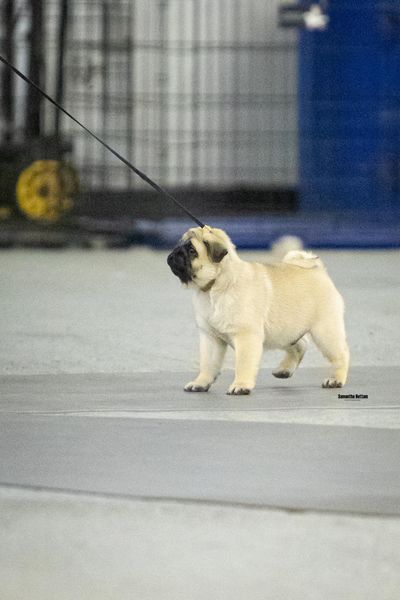


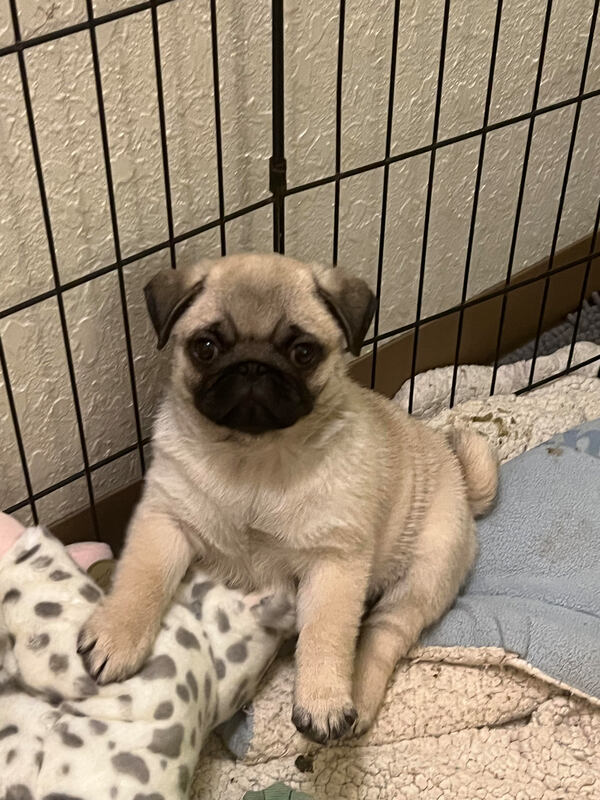


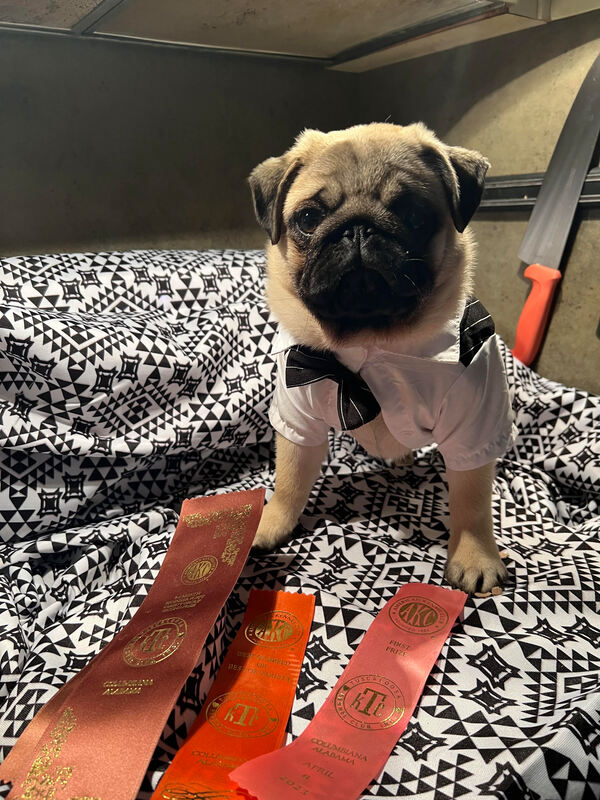

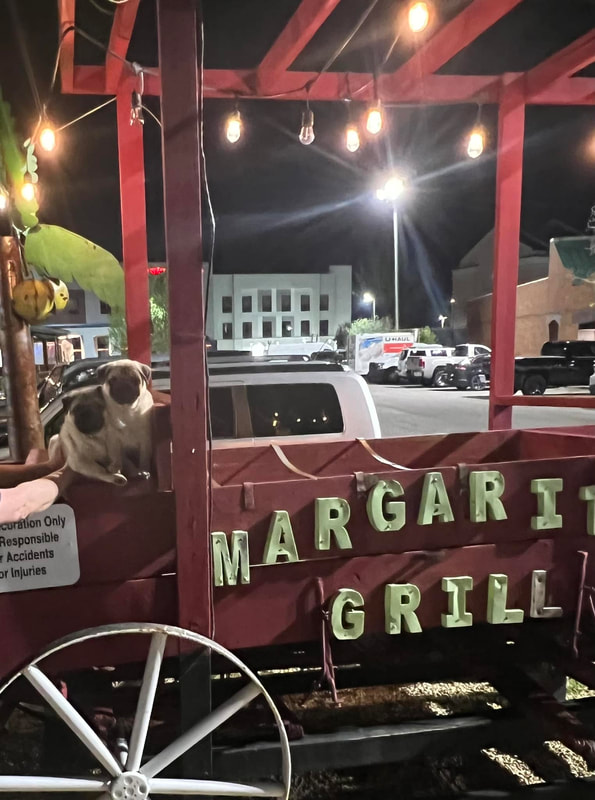



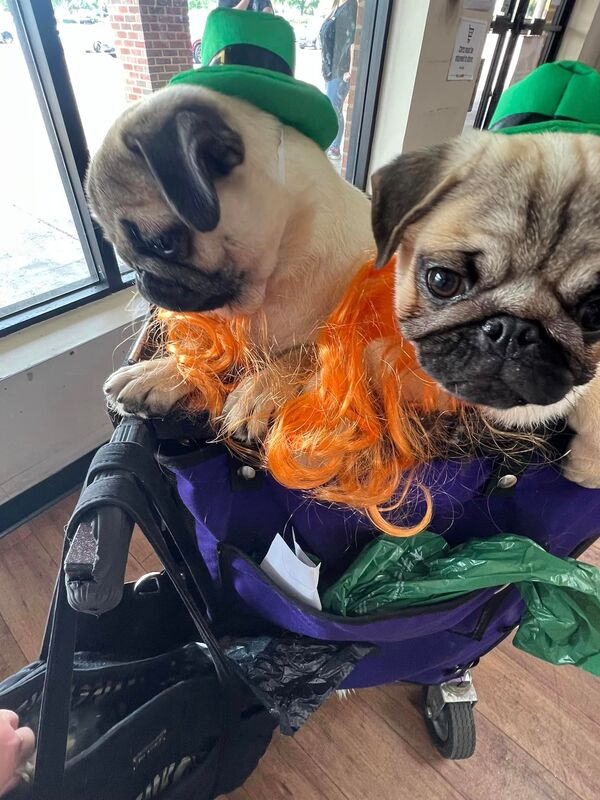



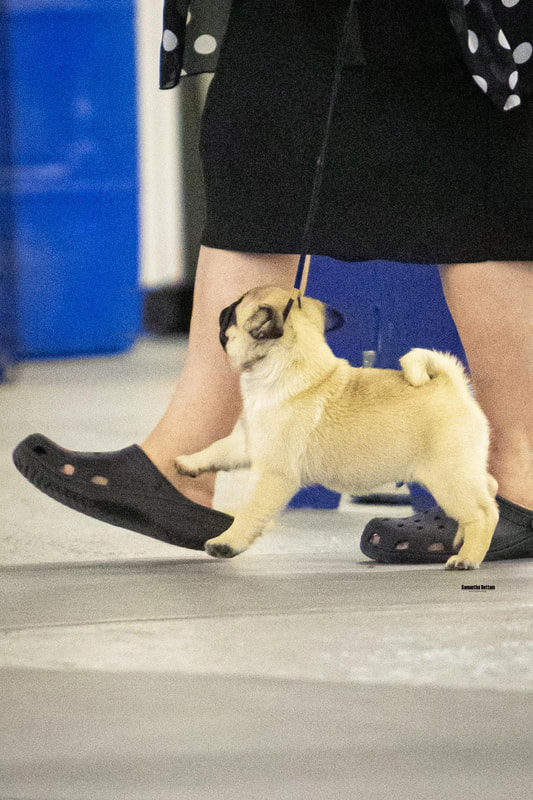






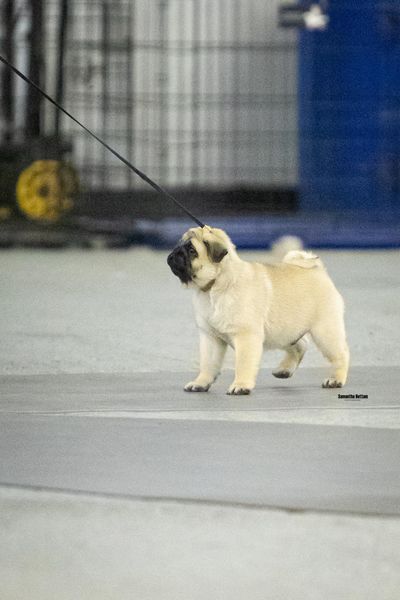



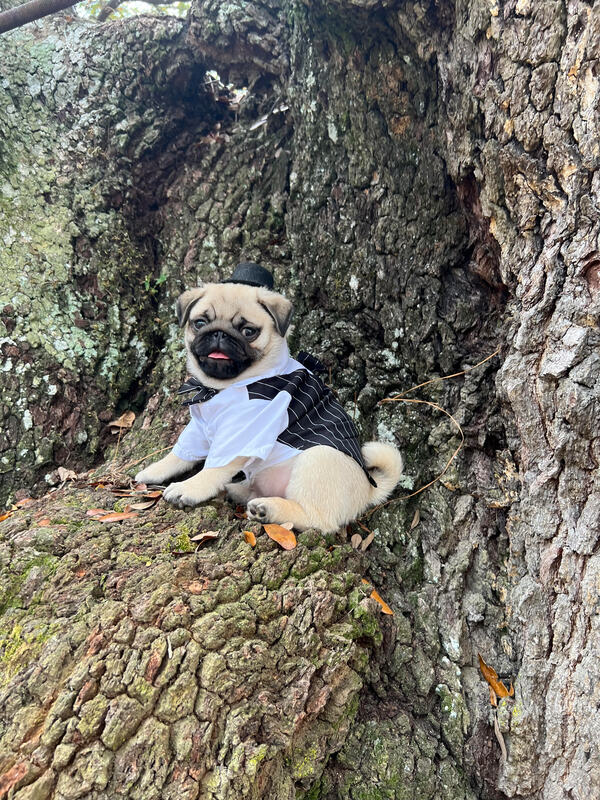
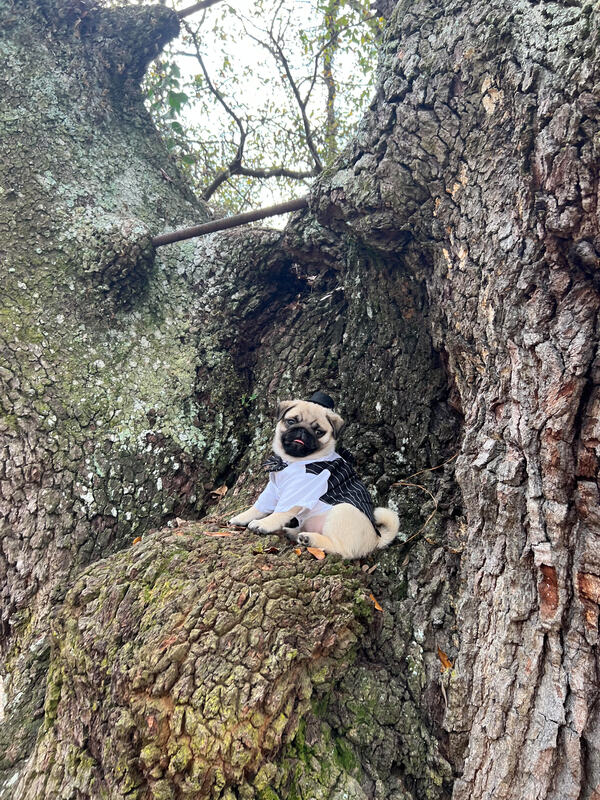
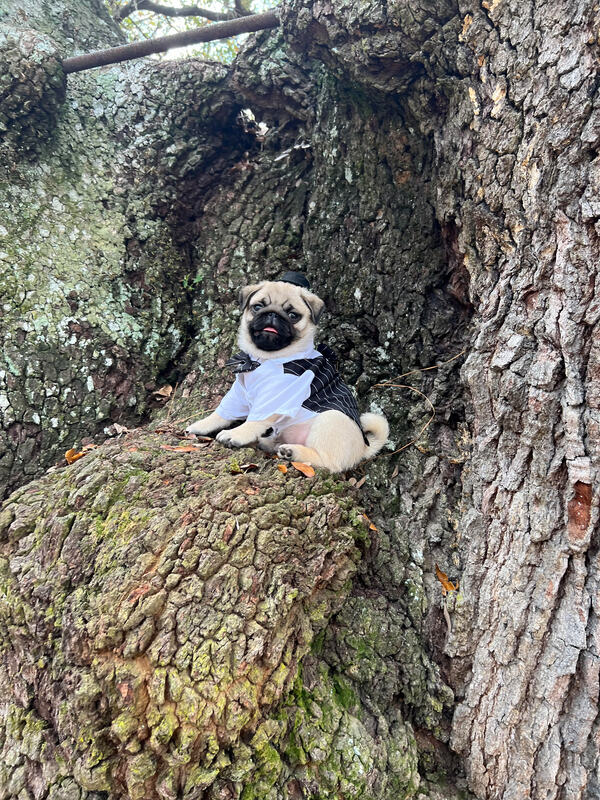

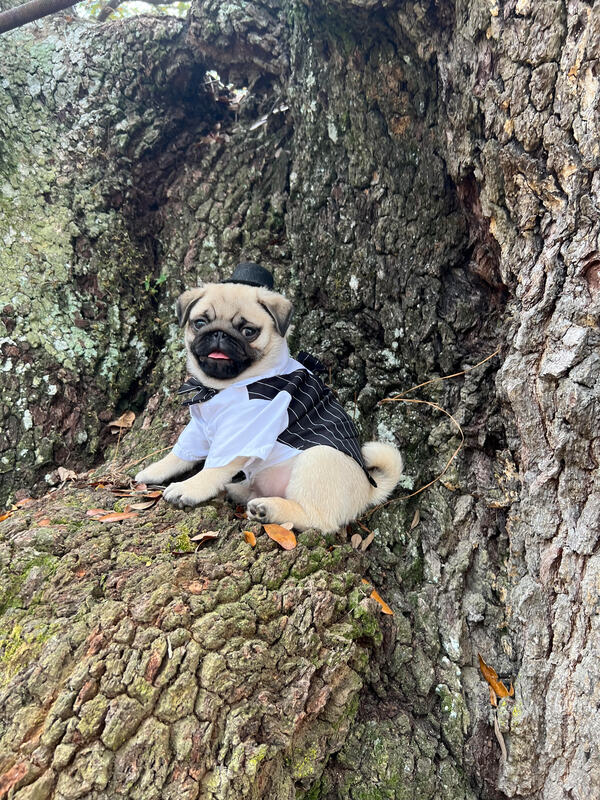

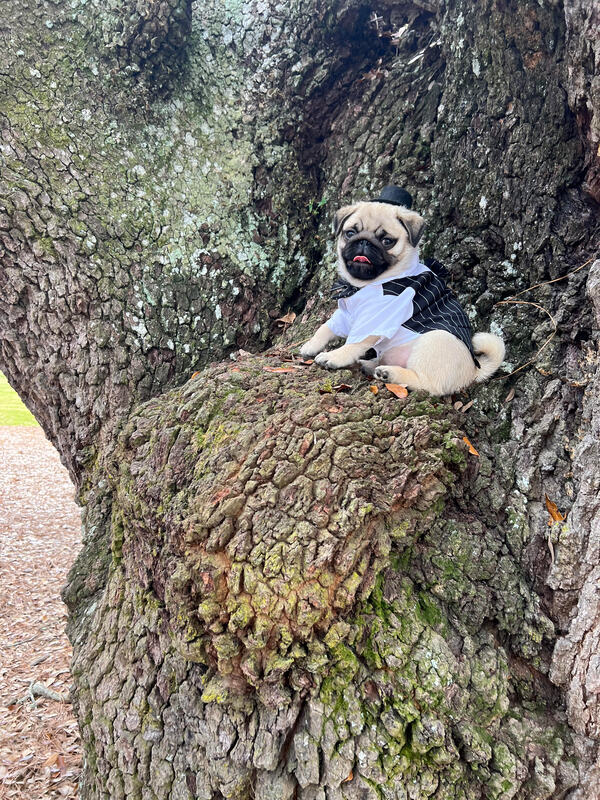




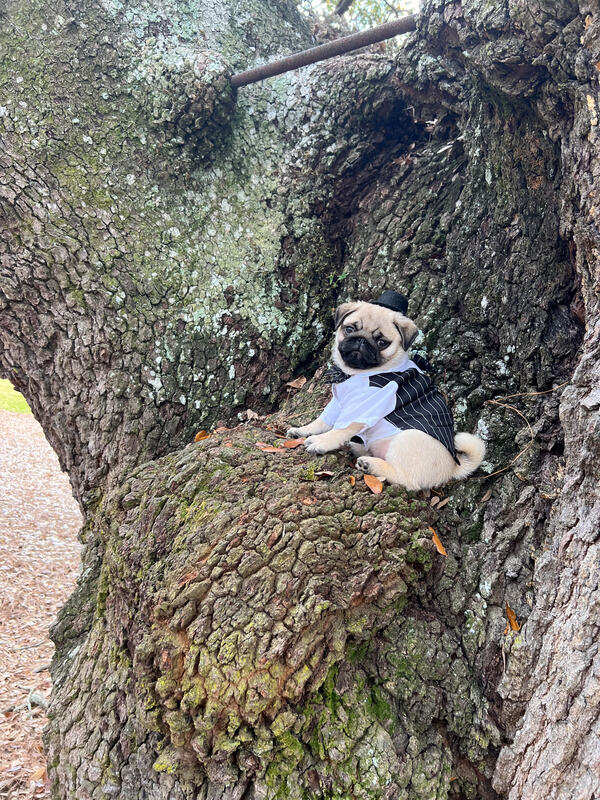
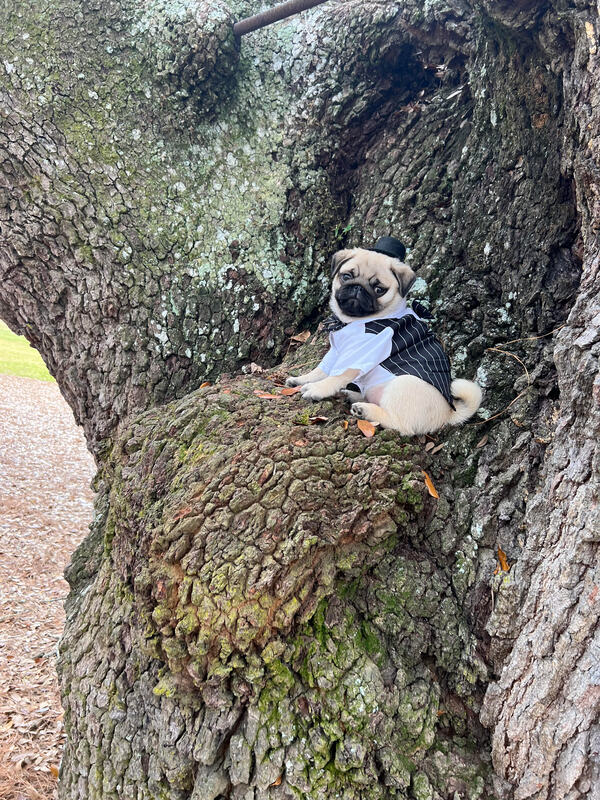



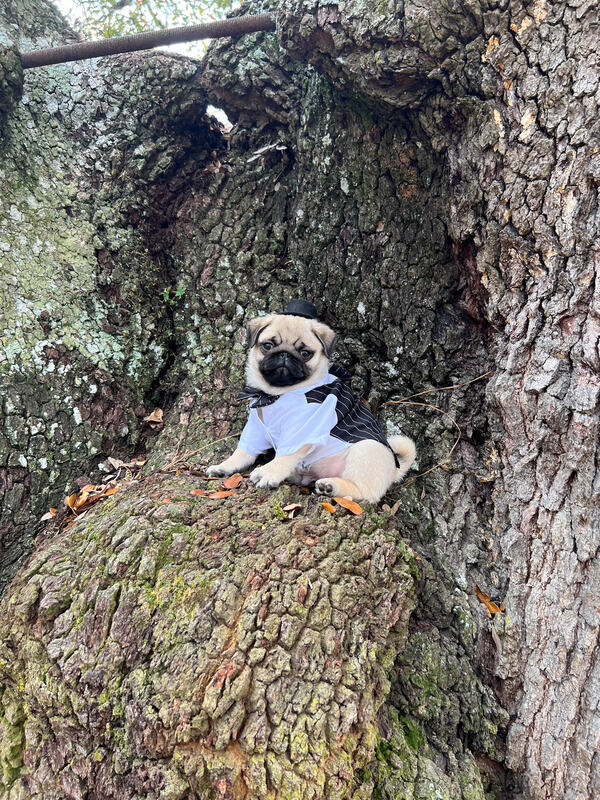
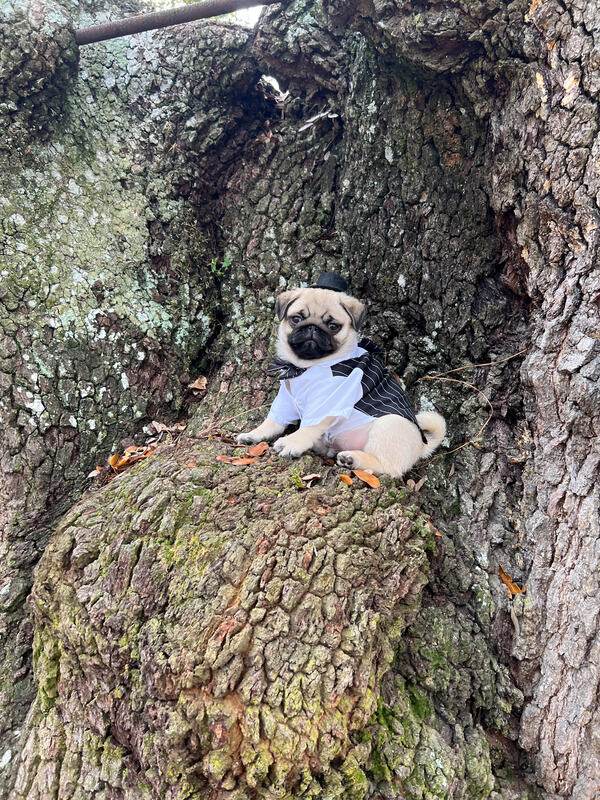
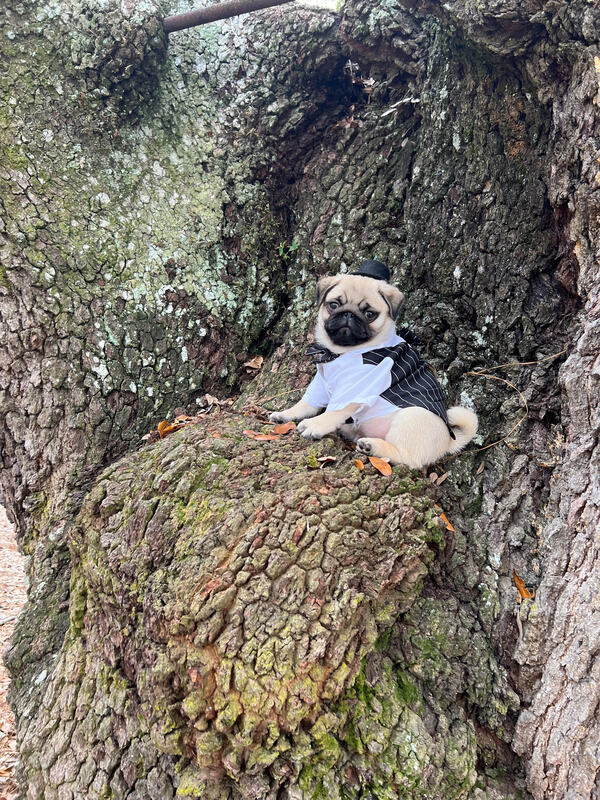
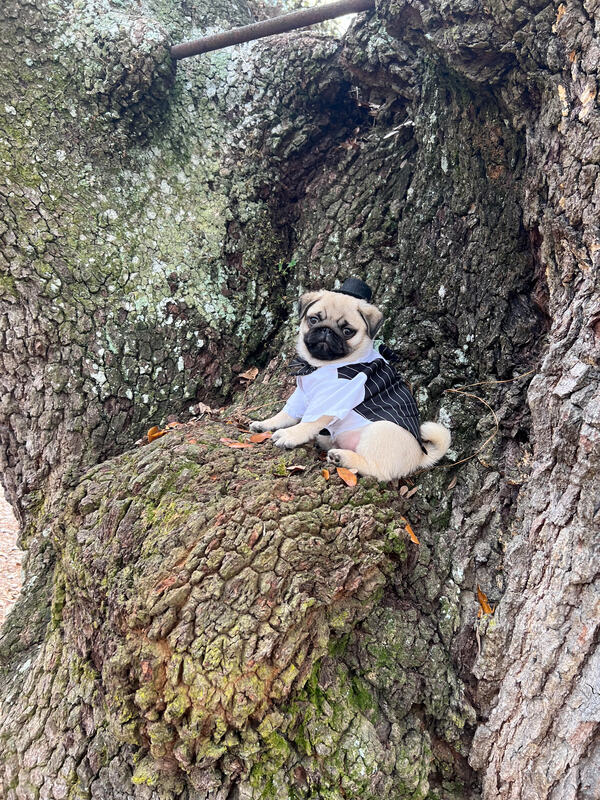

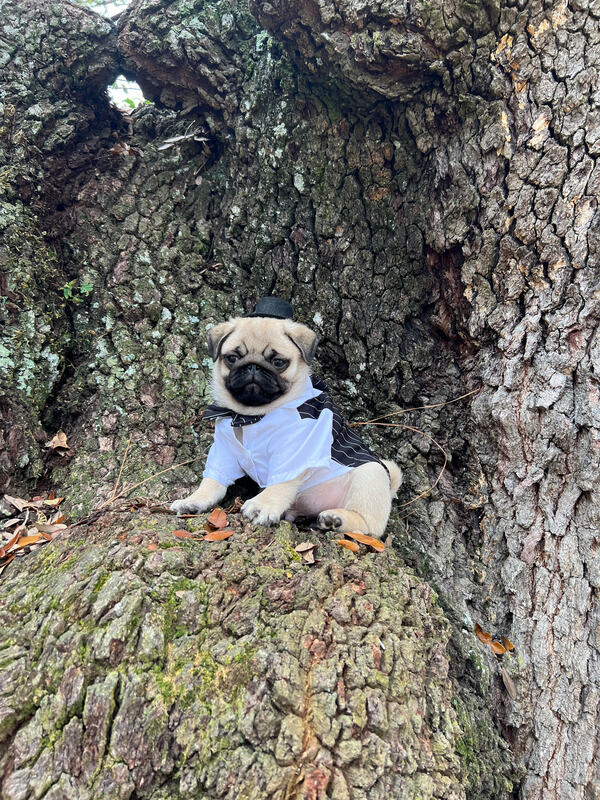
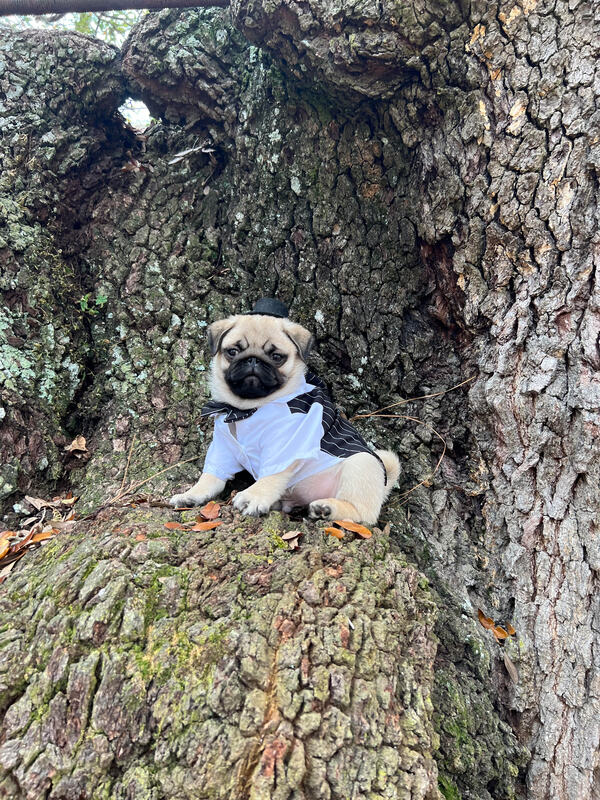

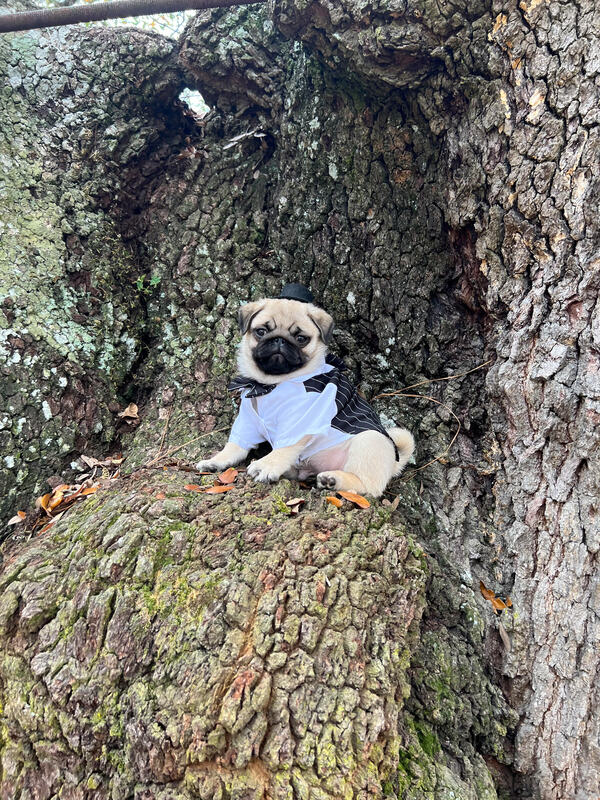




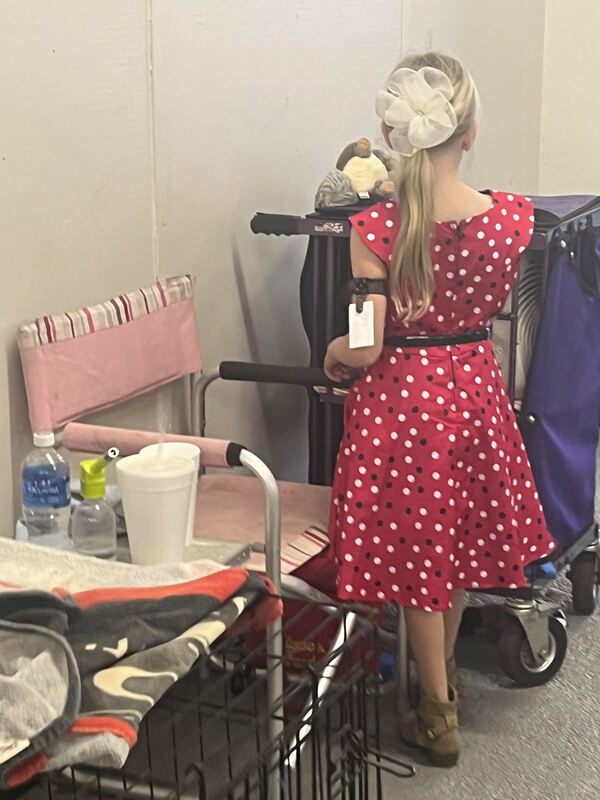
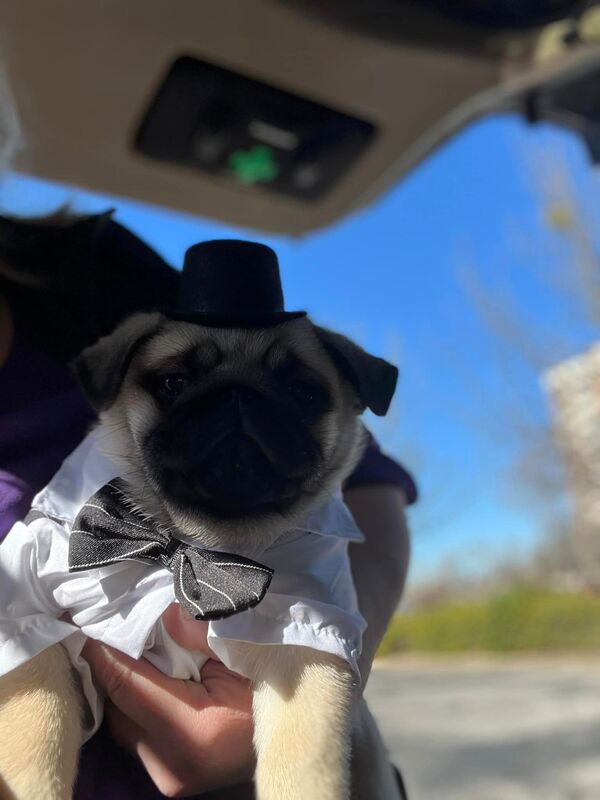

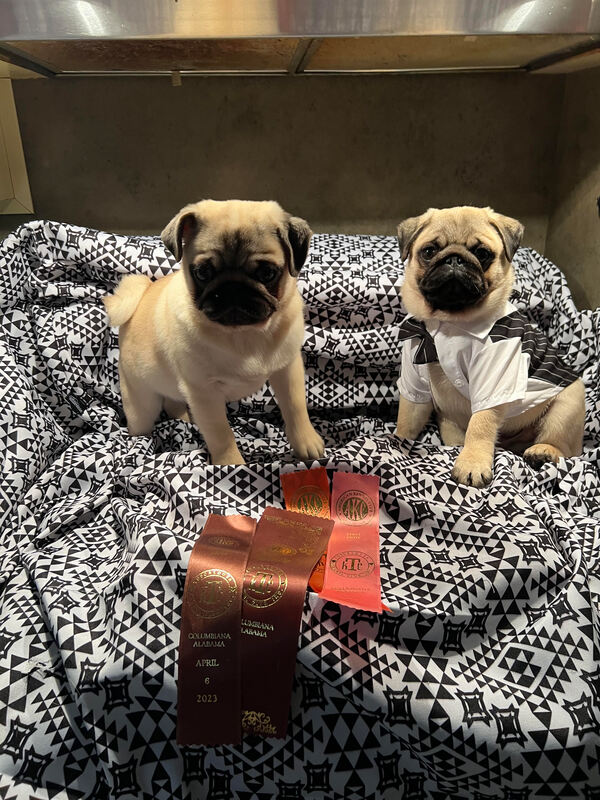




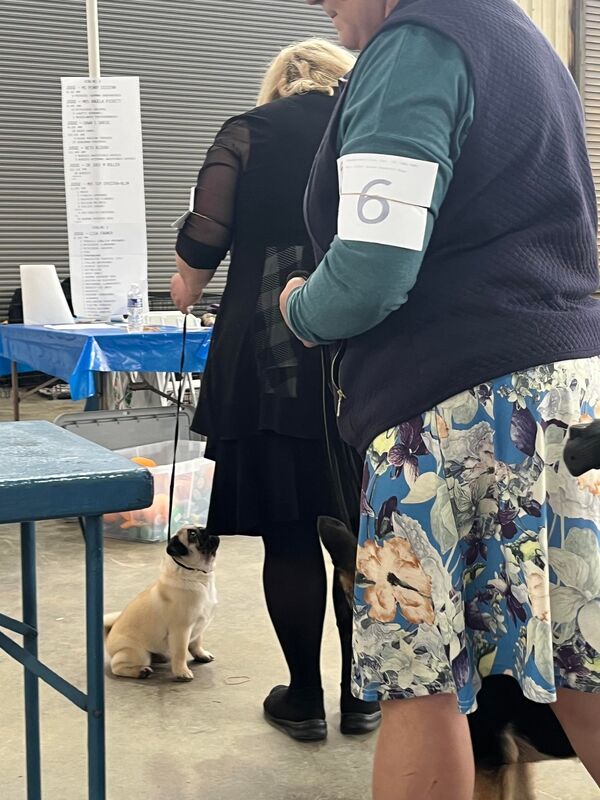

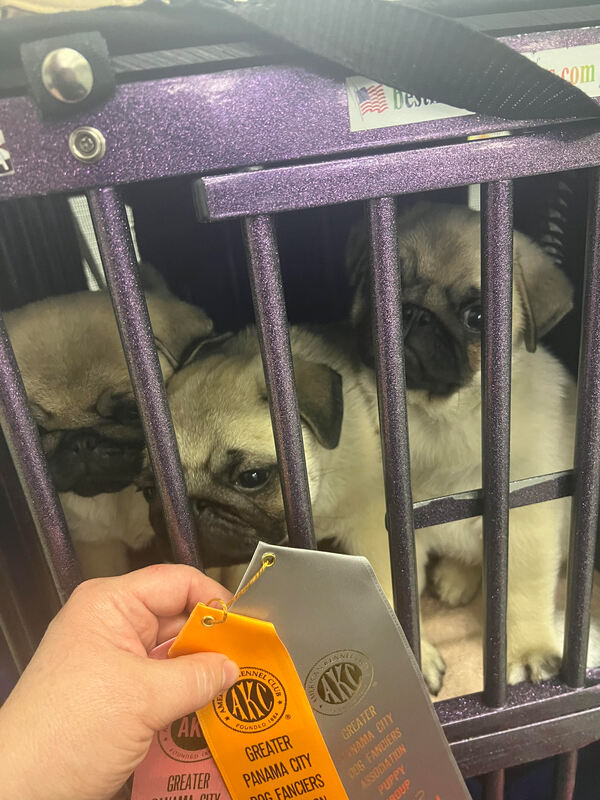

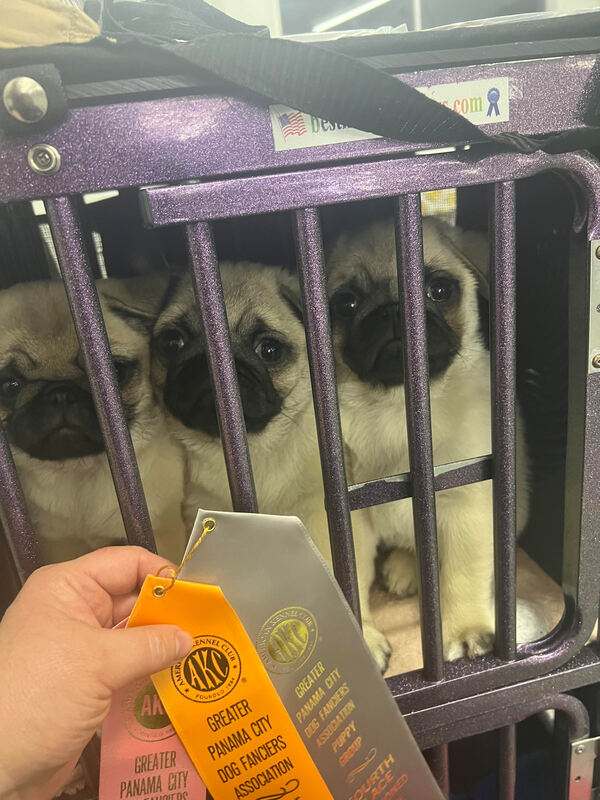
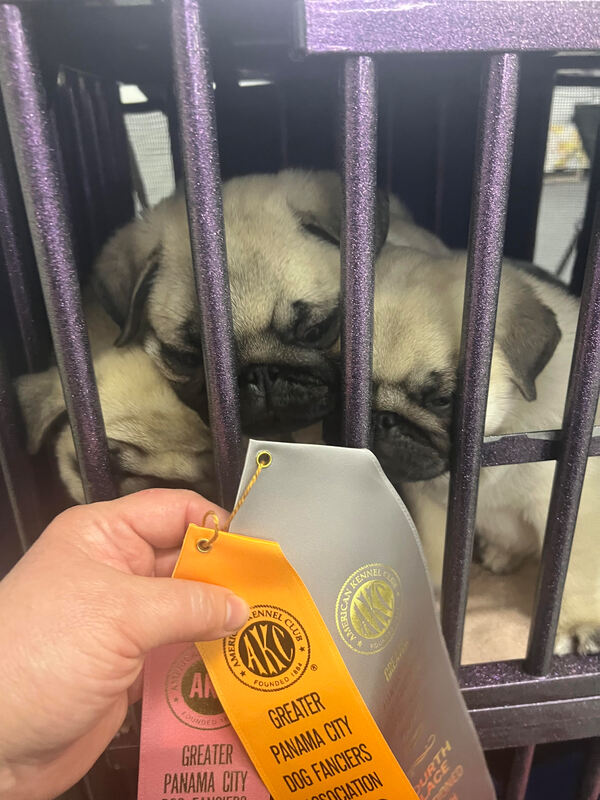
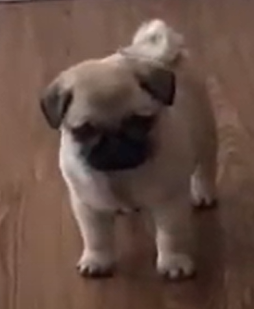
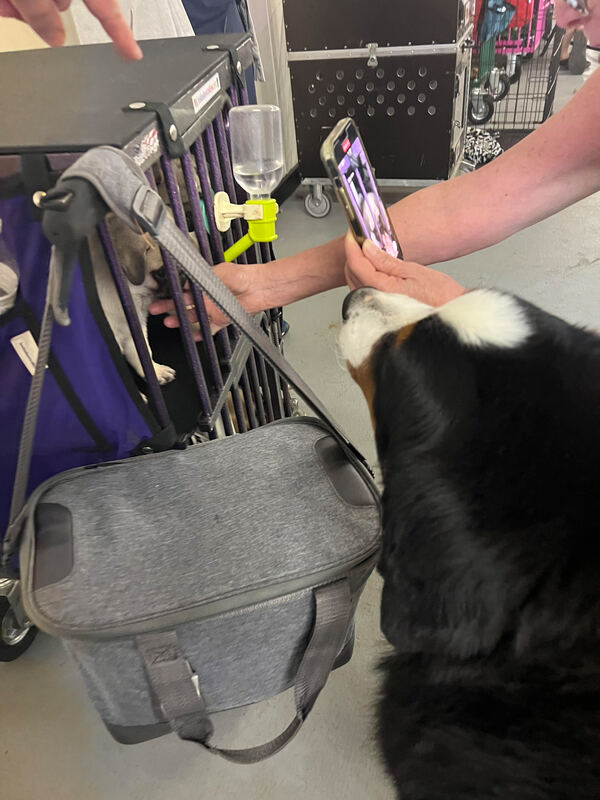
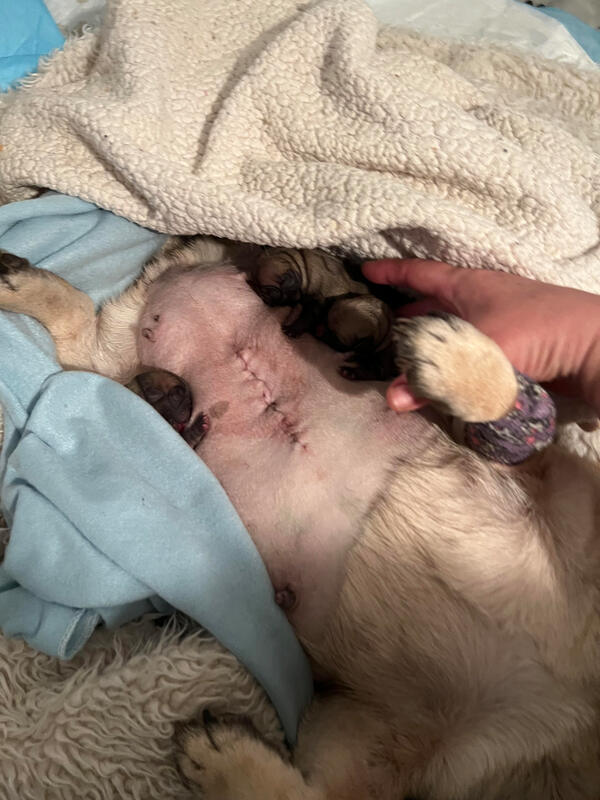
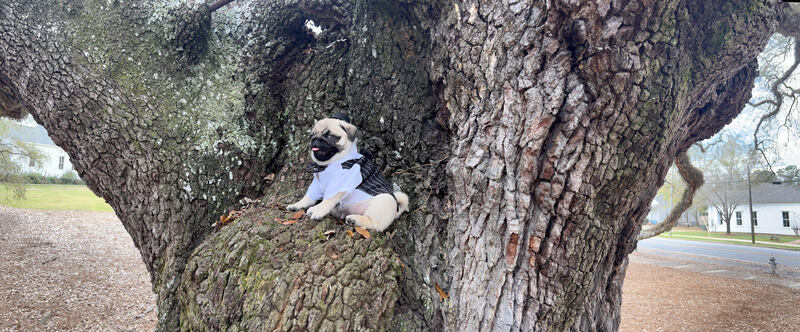











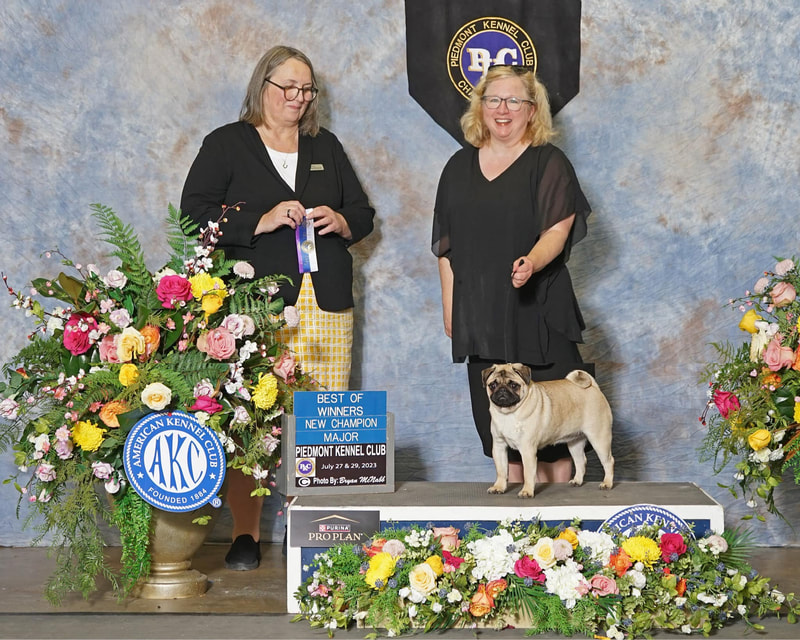


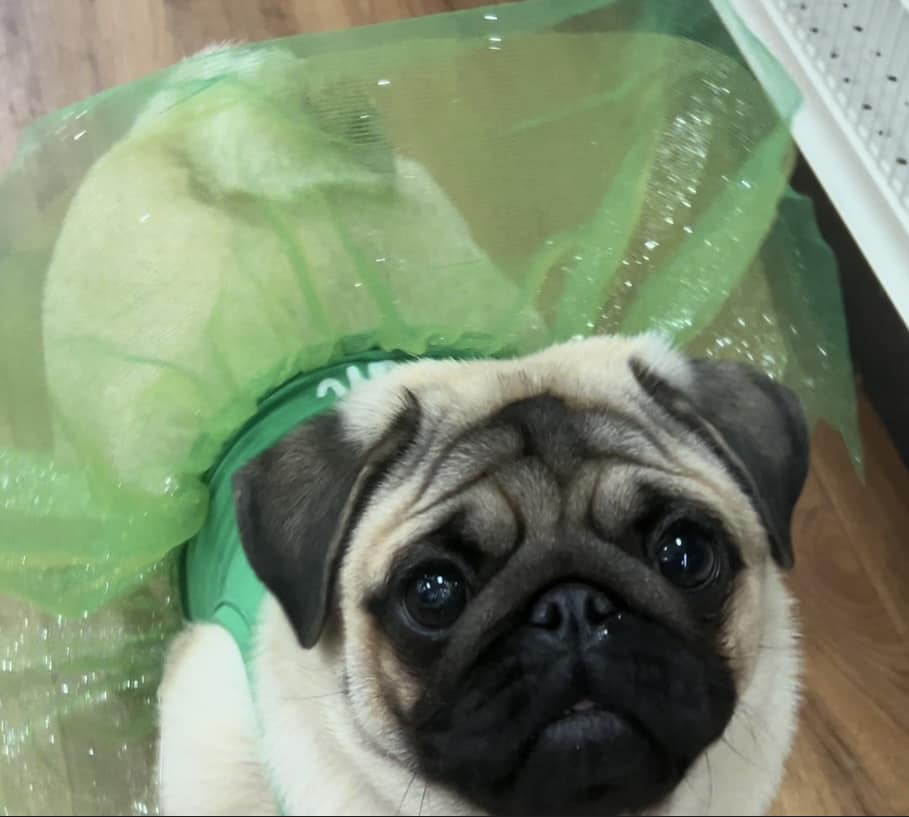

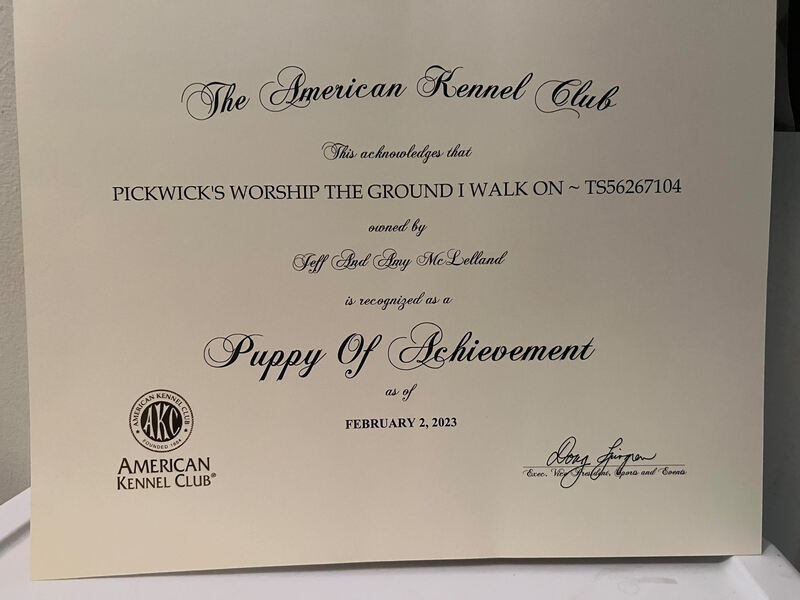
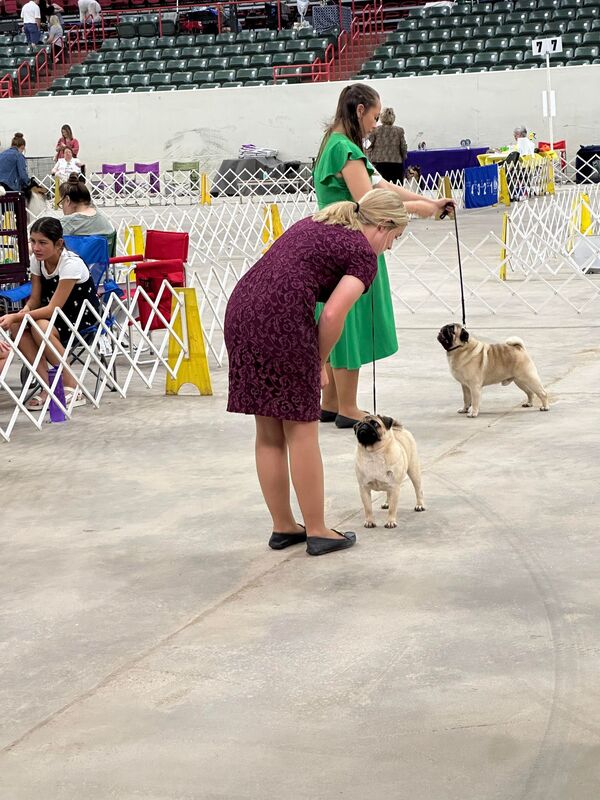
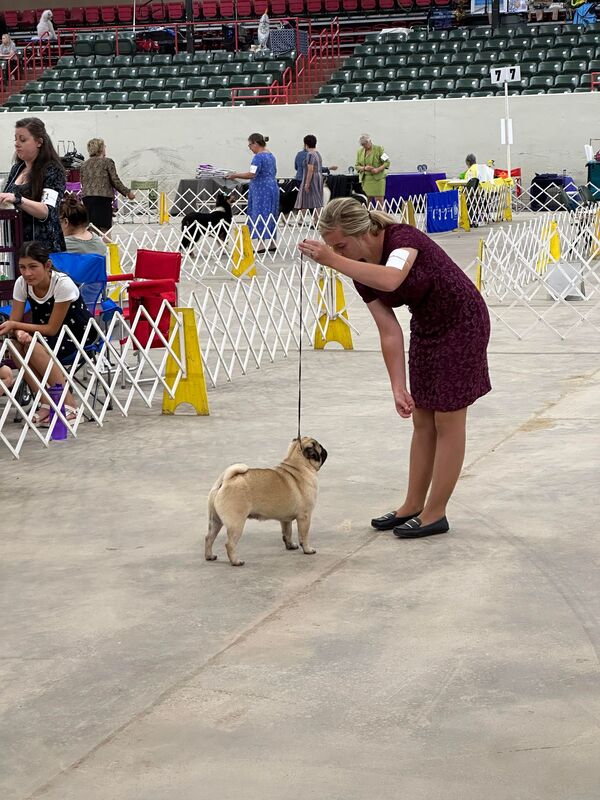

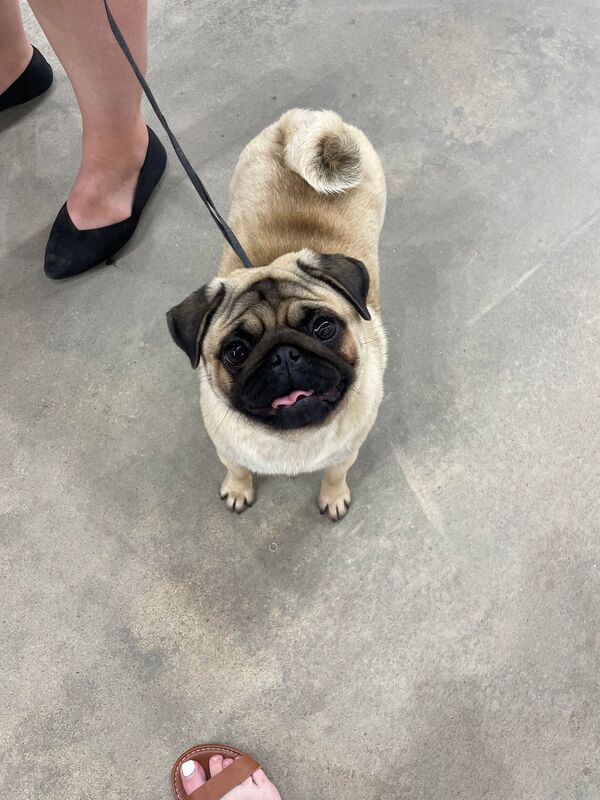


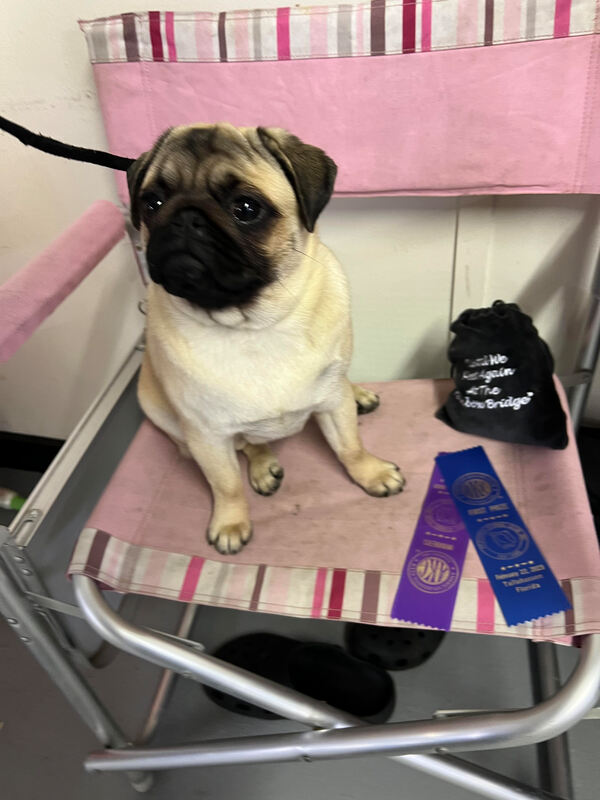
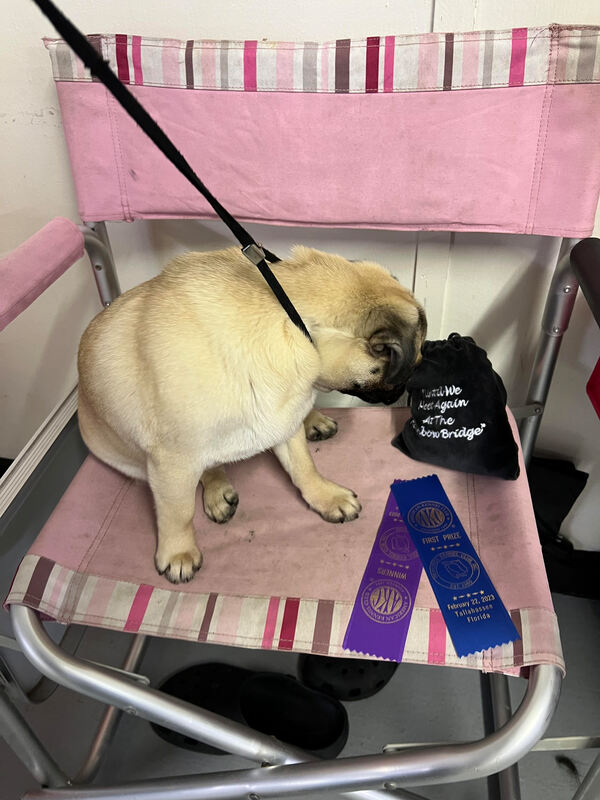

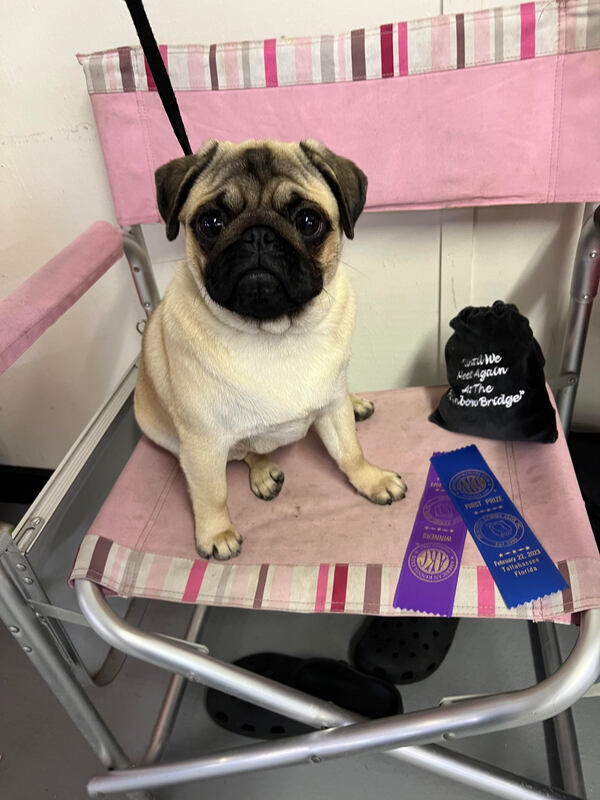




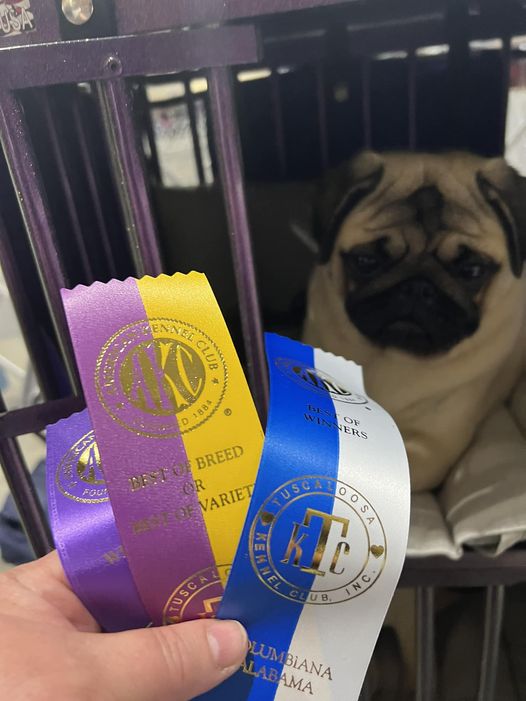



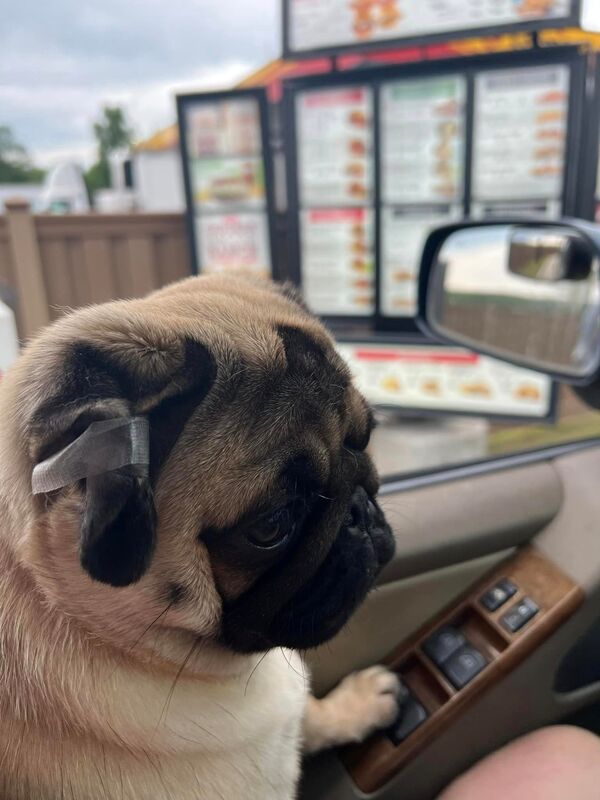
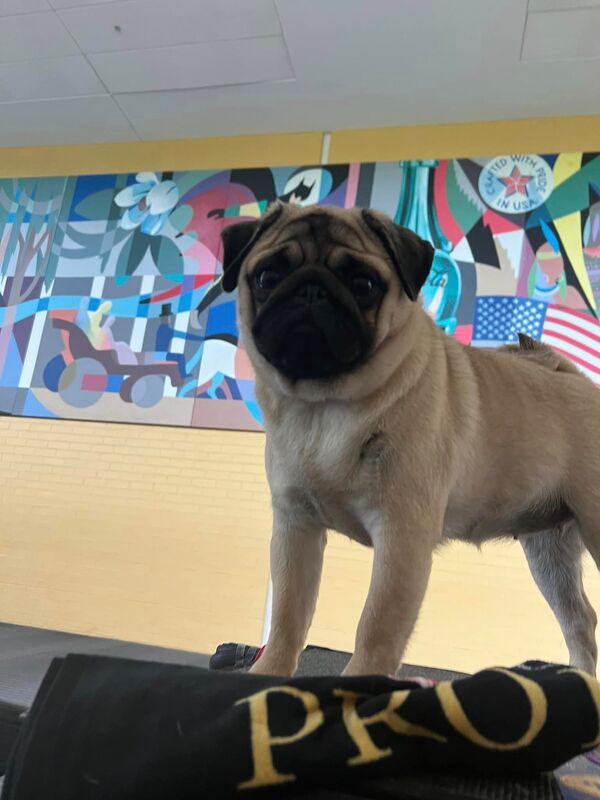





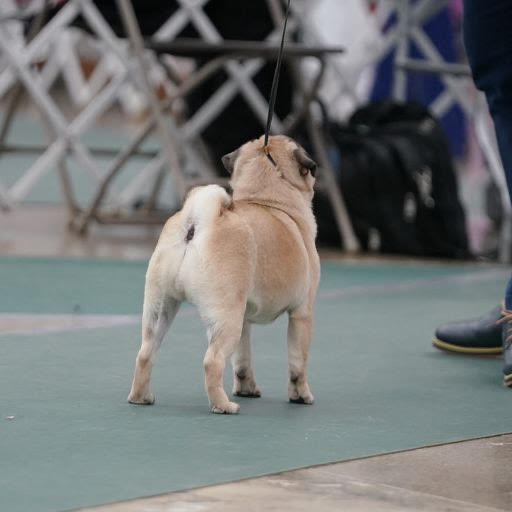








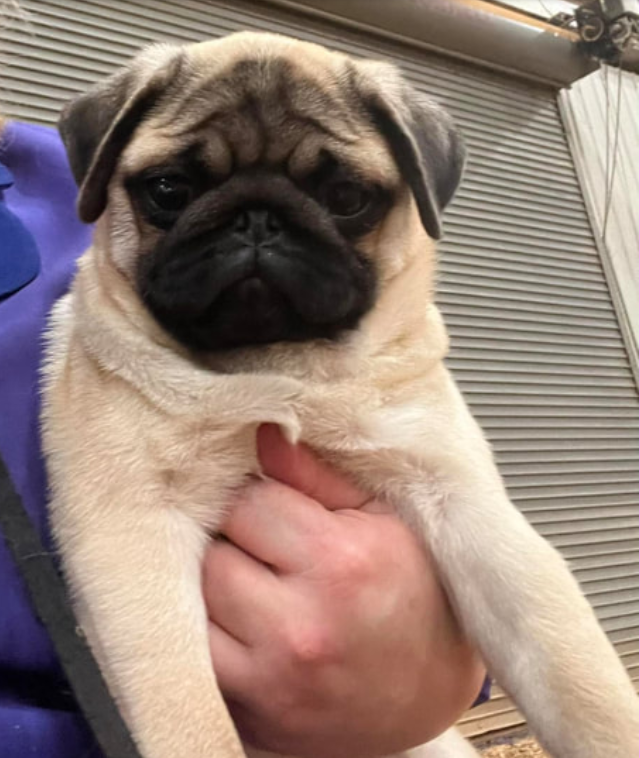

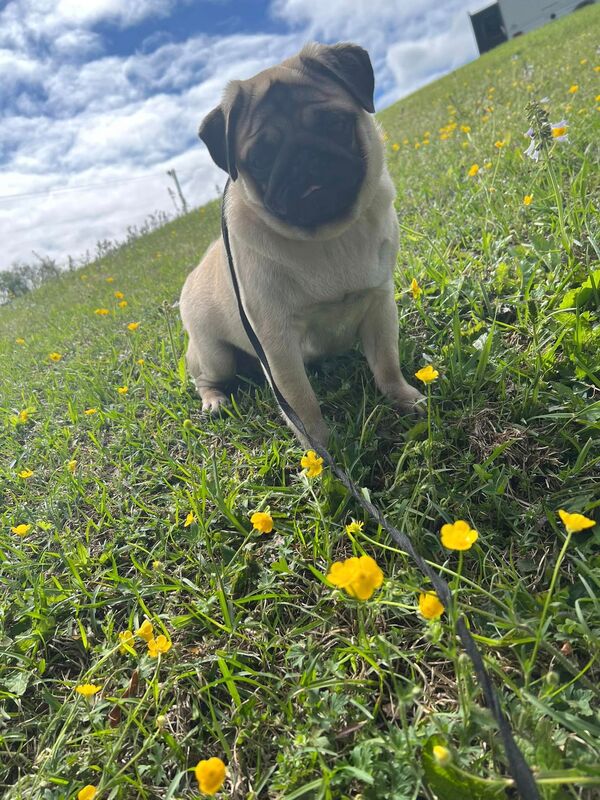




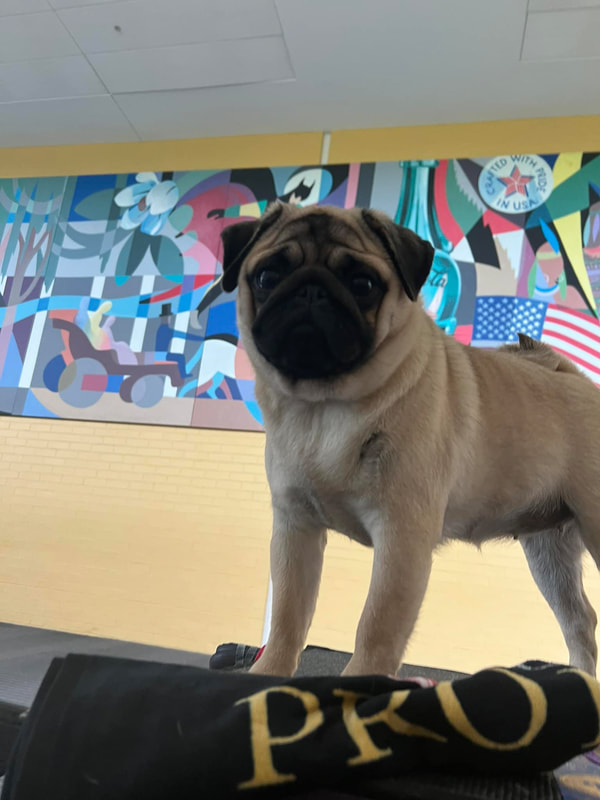



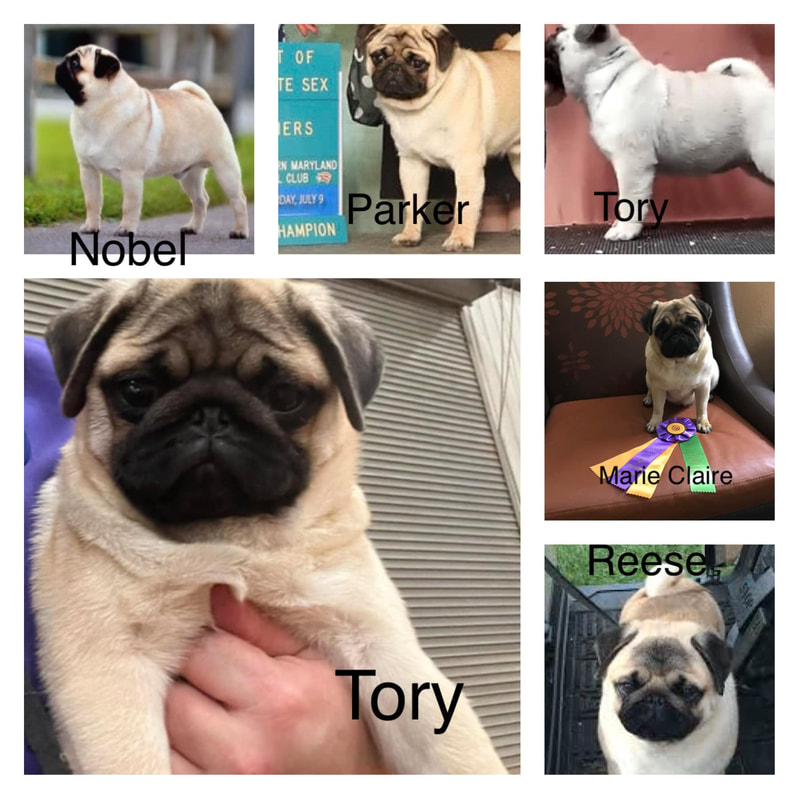



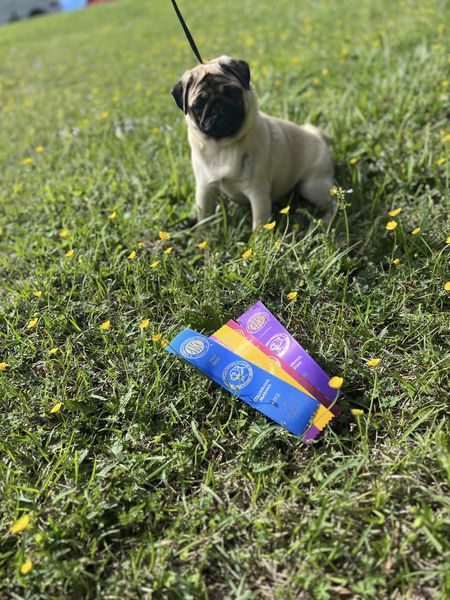
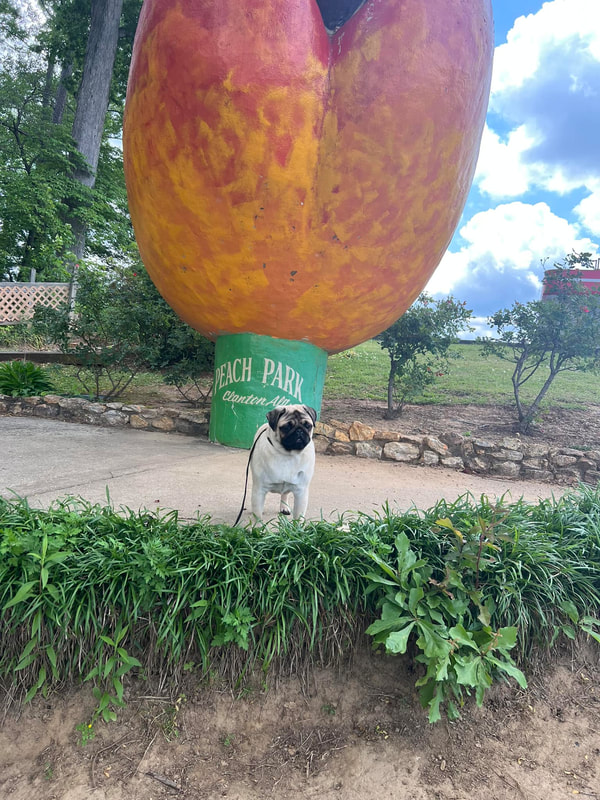

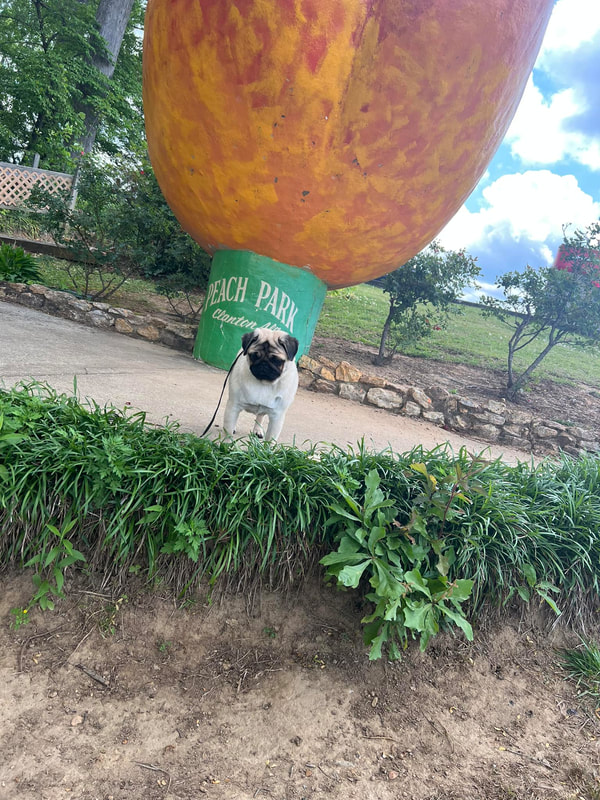
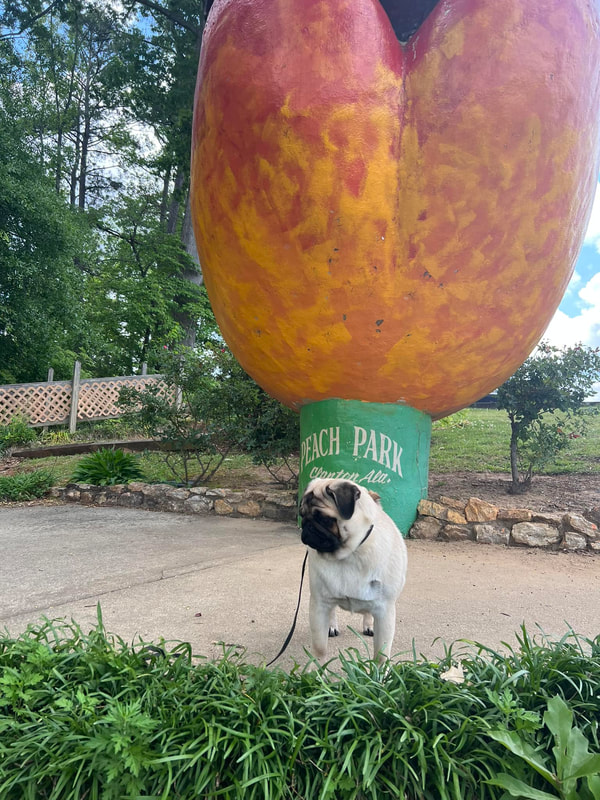


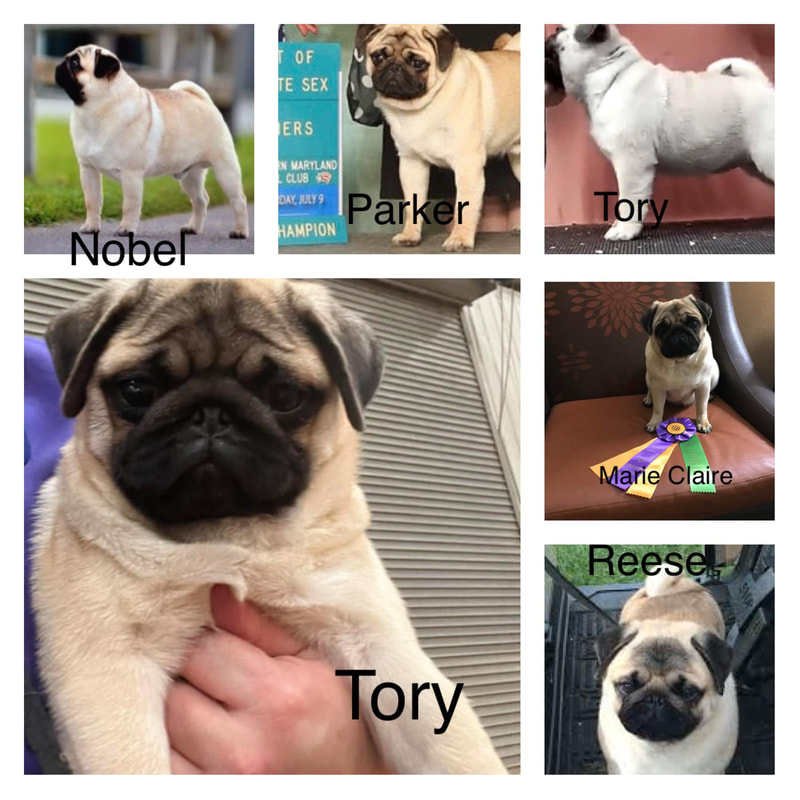
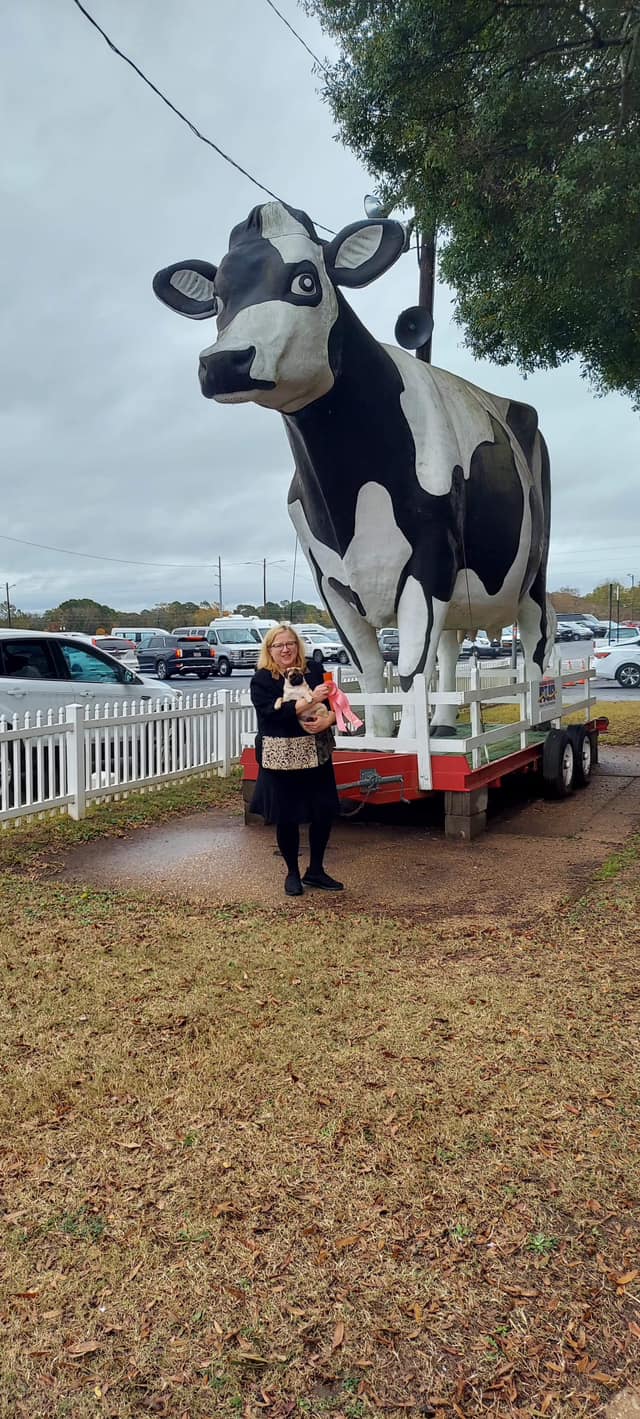






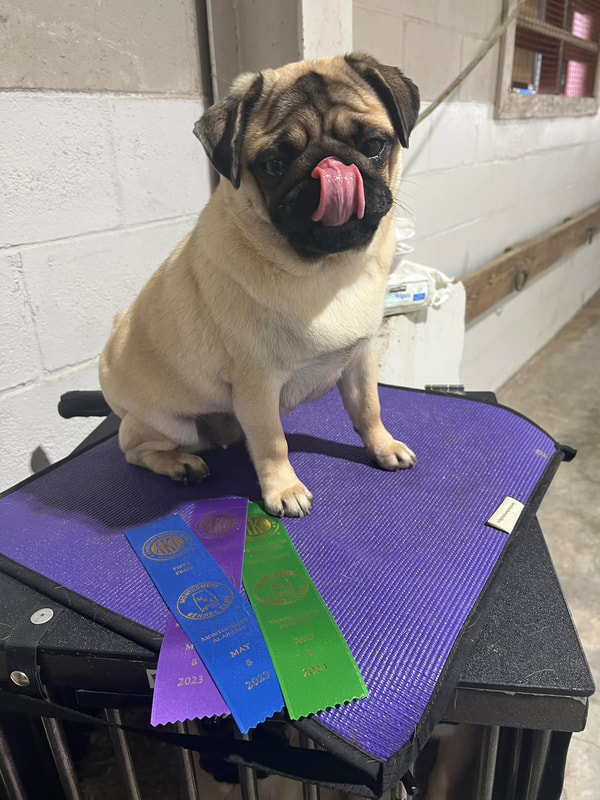

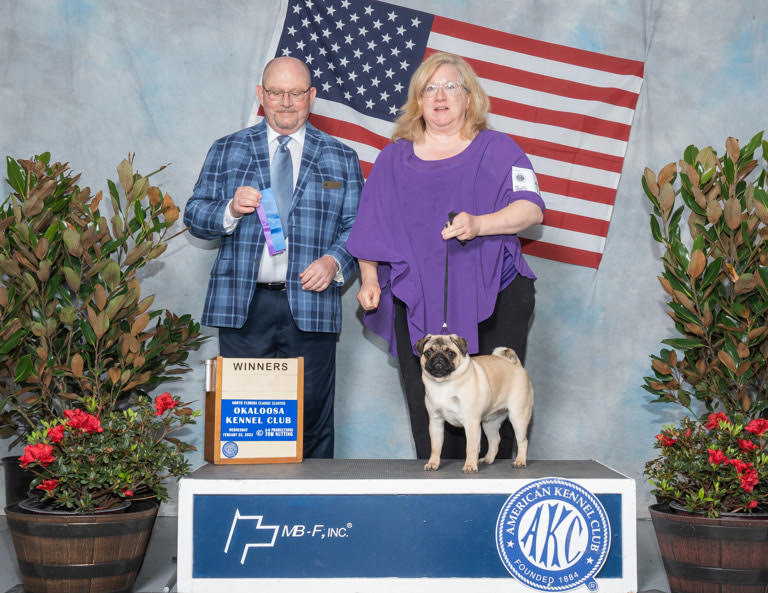


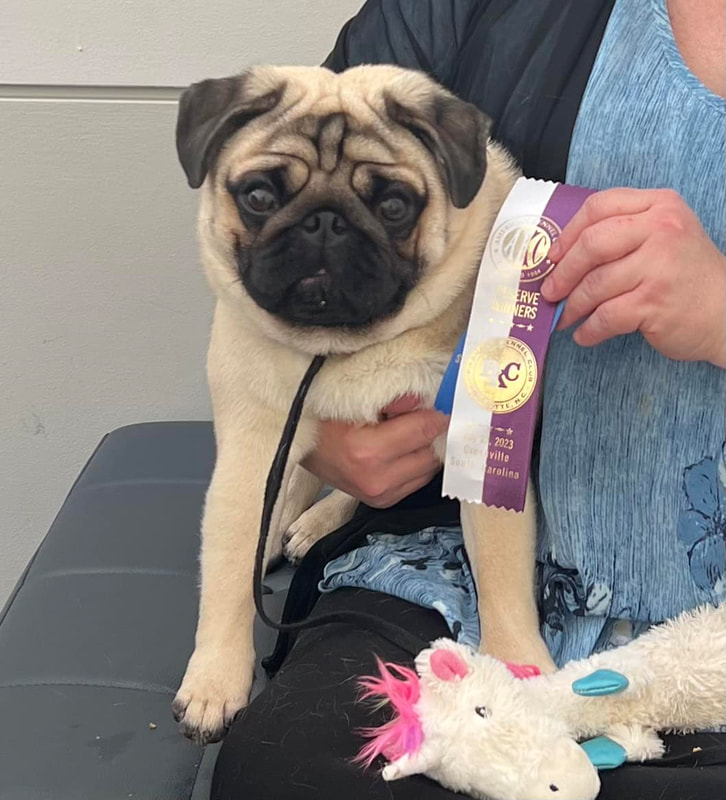



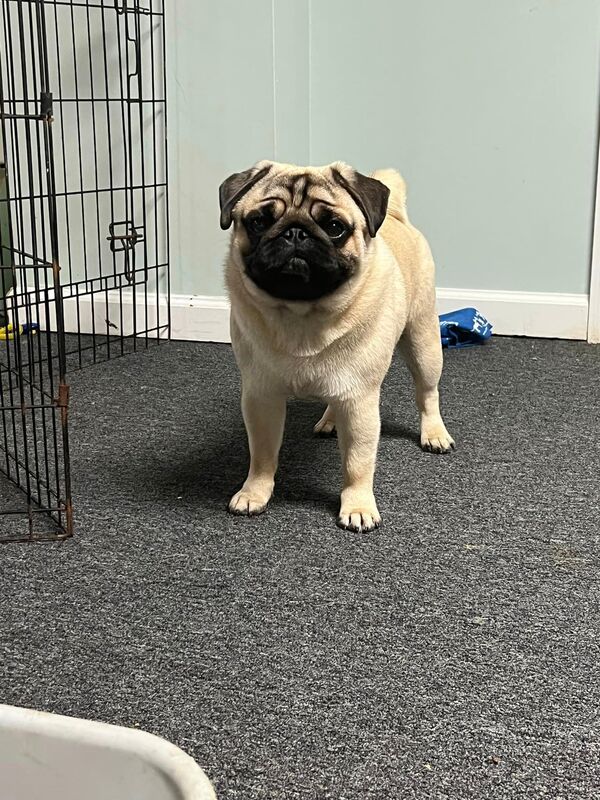




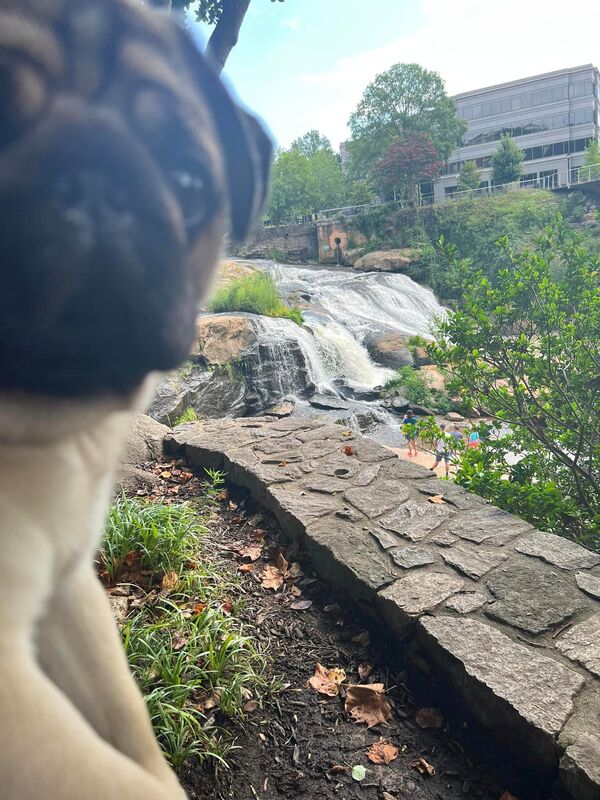



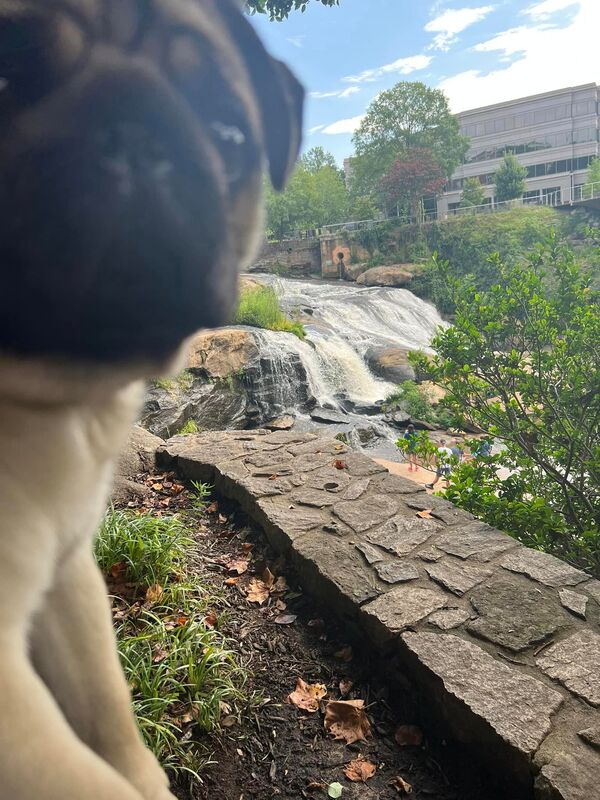







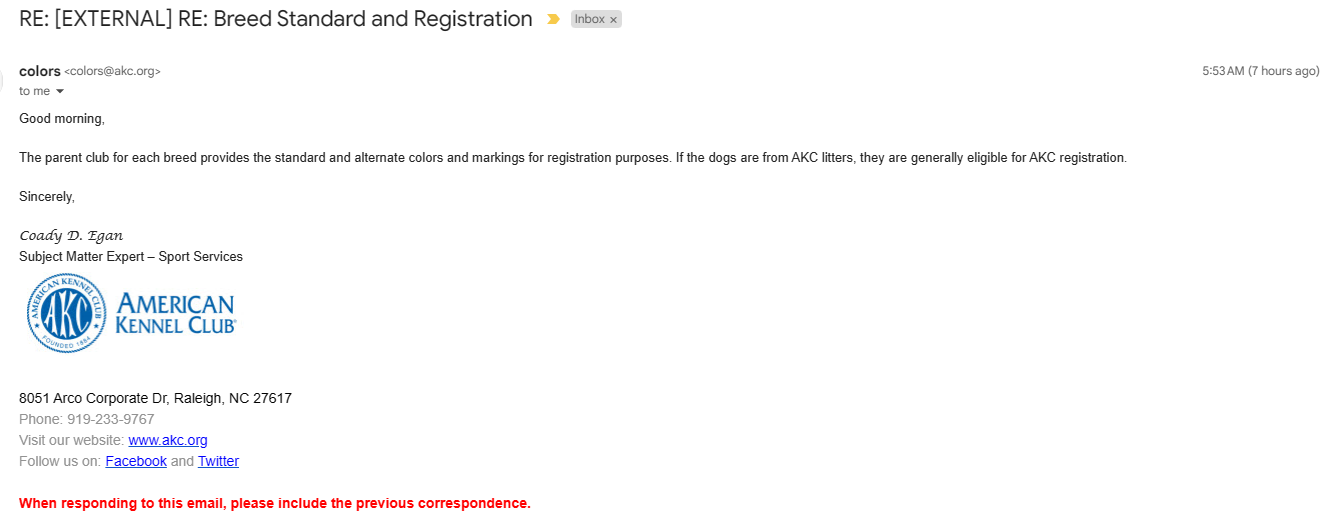
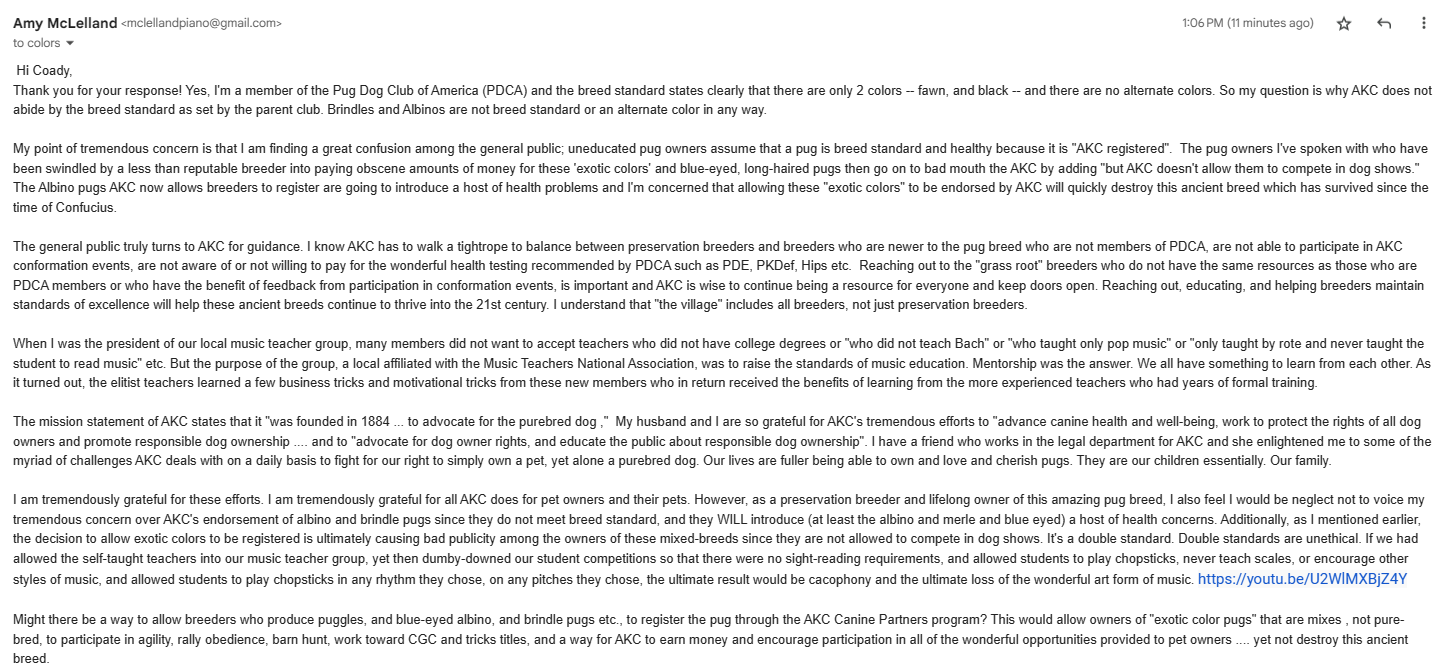

 RSS Feed
RSS Feed